I was only supposed to spend a few weeks backpacking Colombia.
Instead, this magical country completely pulled me in – I ended up spending three months backpacking Colombia, and a further two months putting down roots to live in Medellin.
I’m fiercely defensive of Colombia. It still has a negative reputation, but that usually comes from people who’ve never visited. Before I chose to travel solo in Colombia in 2013 I was a little nervous – I’d heard all the horror stories of drug cartels and senseless violence – but once I arrived it was all forgotten.
Instead, I found myself surrounded by technicolour painted towns and surreal monoliths in the countryside; by beachside jungles and the rolling hills of coffee plantations; by giant hammocks in the cloud forest and street art painted onto crumbling yellow walls.
I was also surrounded by the most incredibly welcoming people – and it’s that generous spirit which I love most about Colombia. It’s been four years since I last set foot in Colombia, but it’s still hands down one of my favourite countries.
Colombia is where I learned to feel like a true traveller.
Quick links:
– Things to know about backpacking Colombia –
Weather in Colombia / When to visit Colombia / Food in Colombia / Drinking in Colombia / Travel insurance in Colombia / Politics in Colombia / Safety in Colombia / Books about Colombia / Speaking Spanish in Colombia / Volunteering in Colombia
– Travelling around Colombia –
Transport in Colombia / Bus routes in Colombia / Hostels in Colombia / Entering & leaving Colombia / Visas for Colombia / Colombia travel itineraries
– Where to go in Colombia? –
Bogota / Medellin / Guatape / Jardin / Salento / Popayan / Pasto / Cali / Santa Marta / Minca / Parque Tayrona / Cartagena
Things to know about backpacking Colombia
What’s the weather in Colombia like?
Because it’s in the northern part of South America and close to the equator, the temperature in Colombia doesn’t change much. Instead of traditional seasons there are two main climate periods of ‘dry season’ and ‘wet season’, and the weather is affected mainly by altitude – the coldest city is Bogota, where you’ll need a jacket most evenings.
When’s the best time of year to visit Colombia?
The Caribbean coast is always warm and tropical, and much of the north is the same. Colombia’s rainy wet season lasts from May to October, which means the later months of the year are Colombia’s low season. December to March is peak tourist season, when the entire country is sunny and dry (apart from the Amazon jungle!), so prices will be highest then too.
I started my Colombia travels in May on the Caribbean coast, and barely saw any rain – although once I reached Bogota in June I had an umbrella at the ready most days. I moved to Medellin for two months in mid March, and the weather was spring-like throughout.
What’s the local food in Colombia like?
I find Colombian cuisine completely delicious! It’s all made up of hearty stews, cheesy arepas, sharp and spicy salsas, and a lot of grilled meat – all washed down with an Aguila beer or a strong tinto coffee.
Some of my favourite typical Colombian food includes:
Arepas – a circular bread made of cornmeal. These are often served from street carts as a quick snack (either with a chunk of butter or filled with cheese), but they can be eaten at any time.
Bandejo Paisa – this plate of deliciousness is Colombia’s national dish. It’s a generous meal which includes red beans cooked with pork, rice, plantain, chicarron (like pork crackling), chorizo and a piece of steak, all topped with a fried egg, garnished with avocado and served with an arepa. You won’t be able to move for a few hours after eating this!
Ajiaco – a soupy stew with chunks of cassava or potato, shredded chicken and slices of avocado. There’s usually either a corn cob or loose corn in there too – and the best part is the topping of sour cream.
Huevos revueltos – these scrambled eggs with finely diced tomato and onion quickly became my go-to breakfast.
Chocolate completo – hot chocolate and cheese is a wonderfully bizarre Colombian tradition. Simply tear up a chunk of white cheese and push into a cup or bowl of hot chocolate where it starts to melt. Then fish it out with a fork (or a chunk of bread and butter if you really want to be Colombian about it!)
Can I drink the water in Colombia?
The tap water in all major cities is potable (Bogota, Medellin, Cali and Cartagena), but in smaller towns and the countryside it’s advisable to stick to either bottled water, or water you’ve boiled yourself.
What else can I drink in Colombia?
Cafe tinto – Colombia’s national obsession with coffee means there are steaming cups of cafe tinto on sale at every street corner. If you’re a true coffee fiend then head for Salento, Colombia’s coffee country, where you can tour the coffee plantations.
Aguapanela – a refreshing sugar cane juice with a squeeze of lime, which can be served hot or cold.
Fresh fruit juice – street stalls serve up fresh ‘jugo‘ throughout the country, and many are from local exotic fruits like lulo, guanabana, tomate de arbol, guayaba and my favourite Colombian fruit, granadilla. You can either have your juice made ‘con agua‘ (mixed with water), or ‘con leche‘ (mixed with milk).
Aguardiente – this aniseed-flavoured liquor, known as ‘guaro‘ for short, is Colombia’s firewater. The bottles with red caps are the original recipe; those with blue caps are sugar-free. Rumour has it that red tastes better, but leaves a worse hangover than blue. To be honest, I felt the hangover either way!
Do I need travel insurance in Colombia?
Yes, absolutely. You should have comprehensive travel insurance when backpacking Colombia – or anywhere, for that matter. I usually use World Nomads as it’s designed for adventurous travellers.
What’s the political situation in Colombia like?
The recent history of Colombia’s fifty-year civil war is violent and extremely complicated, and I’m not qualified to explain the details – Wikipedia has a simplified yet thorough explanation here.
In brief: the Colombian conflict began in 1968 with rural uprisings from farmers and communists. Guerrilla groups evolved, most notably the FARC and the ELN, who fought continuously with right-wing paramilitary groups condoned by the government troops. Although much of the fighting occurred in the countryside, nobody in Colombia was safe: there was a constant threat of kidnappings and roadside bombs, children were snatched up and forced to fight ‘for the cause’, and there were thousands of casualties every day.
The civil war was further complicated by the increase of drug trafficking in the 1980s. As druglord Pablo Escobar rose to fame, many of the warring factions also participated in the drug trade, making more money to buy more weapons. The violence dramatically increased, and by the 1990s Colombia was one of the most dangerous countries in the world.
A huge percentage of Colombian people have been internally displaced over the past few decades, and many thousands have been killed. The government have attempted reconciliatory peace treaties a number of times, most recently and most successfully in 2016, but some violence still seems to continue.
Is Colombia safe to travel solo?
I felt safe while travelling solo in Colombia, and I met many solo female travellers who felt the same – but like most backpackers, I only visited the more tourist-friendly places. There’s no denying that parts of Colombia are still extremely dangerous – there are plenty of armed gangs vying for territory, and the drug trade still exists – but travellers are unlikely to visit these regions.
Petty crime and scams on tourists are still common – I caught a girl slipping her hand into my bag at a club in Medellin, and felt very thankful I’d left my passport in the hostel! Violence increases after dark, so keep your wits about you and don’t walk alone at night if you can help it.
Common scams or unsafe situations in Colombia include:
– Dodgy taxi drivers. Hailing unlicensed cabs is often a bad idea in foreign countries – and in Colombia there are many stories of backpackers being driven to a cashpoint and being forced to empty their account. Use an app like Tappsi, Cabify or Uber, or ask the hostel/restaurant/bar to call a taxi for you. The most renowned spots in Colombia for this scam are La Candelaria in Bogota, and parts of Cali and Medellin.
– Being overcharged for a taxi ride. It’s not the worst scam at all, but you do feel taken advantage of (and I have personal experience of successfully thwarting this in Medellin!). Many Colombian taxis operate on a meter, but if you’re unaware of this a driver can simply ‘forget’ to turn the meter on and charge a flat fare. Sometimes the meter is also rigged to jump higher than it should – so research the typical cost of a journey before you make it, and stand your ground about the price!
– Drink spiking. Don’t accept drinks from strangers and keep a close eye on who has access to your drink.
– Hijacking overnight buses in the south of the country. There are gangs operating in the Colombian countryside who sometimes board buses and rob the passengers at gunpoint or knifepoint. Minimise this possibility by only riding the bus in daylight – and if you’re really worried, take flights instead.
Prostitution in Colombia is legal in designated ‘tolerance zones’, so many male tourists will often find themselves being approached. Sex tourism is also pretty common (for some reason, this site gets a lot of blog traffic from websites dedicated to finding women in Medellin). It should go without saying that I don’t recommend perpetuating this particular Colombian industry: many of the country’s organised crime networks are responsible for sex trafficking and child prostitution, and take advantage of thousands of vulnerable displaced Colombians.
Books to read about Colombia
There’s a wealth of Colombia-focused literature and plenty of Colombian authors to check out. The guys at See Colombia Travel have an extensive reading list, but these are my favourite books about Colombia:
- ‘100 Years of Solitude’ by Gabriel Garcia Marquez. A beautifully complex family epic from the father of Colombian literature, which perfectly demonstrates his unique style of magical realism and completely sucks you into Marquez’s world.
- ‘The Lucky Ones’ by Julianne Pachico. An interconnected series of short stories which are written from different perspectives of the civil war, including school children, upper-class Colombians, guerrilla fighters, prisoners and even a group of stoned rabbits! Pachico’s unsentimental approach makes this book a haunting illustration of what it’s like to grow up in a war.
- ‘The Sound of Things Falling’ by Juan Gabriel Vasquez. This novel focuses on Colombia’s drug trade, the lead character’s relationship with his fellow Colombians, and how the two topics combine.
- ‘Short Walks From Bogota’ by Tom Feiling. After writing an in-depth examination of the global cocaine trade in ‘The Candy Machine’, Feiling looks at how modern-day Colombia has been influenced by its turbulent past, woven through with history, politics, and personal understandings of the country from foreigners and locals alike.
Do I need to speak Spanish in Colombia?
Backpacking in Colombia is on the rise: it’s a hugely popular destination right now, and that means a heightened awareness for locals that if they speak English they’ll get more tourism. However, that doesn’t mean you shouldn’t learn Spanish while you’re in Colombia (or before you go) – there’s so much to be gained from chatting in Spanish to cab drivers, stall holders, bar tenders and old ladies at bus stops. Plus Colombians are so stereotypically friendly that you’ll feel rude if you can’t be engaged in conversation!
There are plenty of Spanish schools in Colombia where you can take lessons. I spent a few weeks studying Spanish at the Nueva Lengua language school in Cartagena and Bogota and can highly recommend them.
Read more: Two weeks at Spanish school in Cartagena and Bogota
Volunteering in Colombia
There are plenty of opportunities to volunteer in Colombia. I volunteered at two projects while I was there:
The first was helping out at a church-run free lunch service for impoverished school children in the favelas of Bogota. This was part of my Spanish class program at Nueva Lengua, something I think is a really unique and valuable idea. Quite apart from being shown another side to Bogota, we were also thrust into practicing our stumbling Spanish with a group of young children – who talk much more quickly than adults!
My second volunteer project was at Angeles de Medellin, a small community centre set up by an American man named Marcos. I spent a few glorious afternoons in the barrio of Regalo de Dios, high up on the edge of Medellin, where I helped children with their English homework, did puzzles and played games – but I also gained a humbling insight into how much the civil war is still severely affecting the youngest generation of Colombians.
Other volunteering opportunities in Colombia include:
-
- organic farming (WWOOF)
- wildlife conservation (Parques Nacionales Naturales de Colombia)
- community development (Techo)
TIP: Use aggregate websites like WorkAway, HelpX, WWOOF and Volunteer Latin America for researching possible volunteer projects in Colombia. I’ve used all three sites and they’ve been really helpful!
Travelling around Colombia
What’s the local transport like in Colombia?
There’s no train system in Colombia so I mainly travelled overland via bus, but many backpackers opt for cheap domestic flights on budget airlines.
– Airlines: Avianca, LATAM and VivaColombia are the country’s main airlines, and if you book tickets strategically then flights can be cheaper than bus routes!
– Taxis: prevalent in most cities and easy to use – although as mentioned above, you should be wary of unlicensed drivers.
– Tuk tuk taxis: in smaller towns like Guatape and on the Caribbean coast, you’ll see tuk-tuk-style motor taxis operating as taxis.
– Colectivos: a generic term for a shared bus or van, which can usually hold around ten people (they’re often called ‘combis‘ in other parts of South America). These colectivos are privately run and don’t operate on a specific route: instead, the driver shouts out destinations and passengers board on that basis.
– Chiva buses: these brightly painted rustic buses were Colombia’s original public transport, but they’ve now been relegated to the rural Colombian countryside and as tourist buses for city tours at night (plus a few bottles of aguardiente).
– Coach-style buses: these are the option for long-distance bus journeys. As mentioned above, there can be dangers involved – I never had a problem, although I did pass through quite a few military checkpoints where soldiers casually hefted their guns around. Buses will usually stop for mealtimes at roadside restaurants, but it’s often when the driver is hungry instead of at the typical hours for breakfast/lunch/dinner. For longer bus journeys (more than a few hours), it’s best to buy your ticket ahead of time in case they sell out.
- Ipiales to Pasto: 8,000 COP for a 1 hour 30 min journey. Frequent buses travel this route.
- Pasto to Popayan: 30,000 COP for a 7 hour journey.
- Popayan to Cali: 12,000 COP for a 3 hour journey. Various companies run buses every half hour on this route.
- Cali to Bogota: 65,000 COP for a 12 hour journey.
- Bogota to Medellin: 57,000 COP for a 12 hour journey. This route goes from one mountain range to another, so there’s plenty of hairpin bends. I opted for the overnight journey (along with a sleeping pill!)
- Bogota to Santa Marta: 80,000 COP for a 16 hour journey.
- Bogota to Cartagena: this route does exist but it’s very long – 128,000 COP for an 18 hour journey. Not recommended!
- Cali to Medellin: 50,000 COP for a 9 hour journey.
- Medellin to Guatape: 14,000 COP for a 2 hour journey. Mini buses depart every half hour from the North Bus Terminal.
- Medellin to Jardin: 25,000 COP for a 3.5 hour journey. A dozen buses depart each day from Medellin’s Terminal del Sur (south terminal).
- Medellin to Salento: 47,000 COP for a 6-8 hour journey (the route goes through the mountains so can take longer than expected!).
- Medellin to Cartagena: 104,000 COP for a 12 hour journey. There are six buses a day.
- Cartagena to Santa Marta: 25,000 COP for a 4 hour journey. There are four buses each day.
- Santa Marta to Taganga: 1,400 COP for a 15 minute journey.
- Santa Marta to Parque Tayrona: 7,000 COP for an hour’s journey and departs every half hour from the Santa Marta terminal.
Read more: A guide to bus travel in South America
Where should I stay in Colombia?
Colombia’s backpacking scene has exploded in the last few years, so there are a wealth of fantastic hostels to choose from, as well as plenty of hotels if you have the cash to spend.
While living in Medellin, I rented an apartment by looking at CouchSurfing and the Colombian site CompartoApto, but it’s also possible to rent out apartments in Colombia on Airbnb. Sign up for Airbnb here and get £25 off your first booking!
Check Prices of Colombia Hostels Here!
Hostels in Colombia
| Location | Hostel | Why stay here? |
| Bogota | Graffiti Hostel Bogota | A relaxed hostel with friendly staff in La Candelaria district, where all the sights are within walking distance. |
| Medellin | Black Sheep | This spacious hostel in El Poblado has lots of hang out areas, and they host salsa classes & Spanish language exchange nights. |
| Guatape | Mi Casa Guatape | Lovely little homely place run by a French couple. It’s opposite Restaurante La Mona, and they have a little library, balcony view of the lake and a resident dog named Lulu! |
| Jardin | Canto de Agua | There’s a community vibe at this hostel just outside Jardin, with hammocks, tents, group meals and a big kitchen. |
| Salento | La Serrana | This eco-farm is a walk from the centre of Salento but it’s a stunning hostel: think campfires and cowboys in the midst of coffee plantations. Camping facilities are available too. |
| Popayan | Park Life Hostel | Centrally located beside the cathedral in the main plaza with a big sun-lit lounge area. |
| Pasto | Casa Hospedaje la Bohemia | Family-run hostel at the top of the hill with great views of the city and eclectic decor. |
| Cali | El Viajero Cali Hostel & Salsa School | Part of a chain, El Viajero is in the historical San Antonio district with breakfast and daily salsa classes included. There’s also a kitchen, outdoor pool and a big bar area. |
| Santa Marta | La Brisa Loca | A hostel in a 100 year old mansion building is the perfect place for wild parties on a roof terrace! |
| Costeño | Costeño Beach Surf Camp | This wonderfully chilled beach hostel is run by a pair of Canadian brothers on a former coconut farm. |
| Palomino | The Dreamer | This is a great ‘laze by the pool’ hostel: it’s a set of huts built around the pool and flanked by palms, with the beach just metres away. There’s a simple restaurant on site and hammocks & daybeds scattered around the garden. |
| Minca | Casa Elemento | The giant hammock says everything! |
| Parque Tayrona | Viajero Tayrona Hostel & Ecohabs | This luxury hotel was recently turned into a hostel – and the result is hammocks, massages, pingpong, volleyball, an onsite restaurant and a lot of overwhelmed backpackers! |
| Cartagena | Hostal Getsemani | Located in the historic old town close to Media Luna, this hostel has a big patio, terrace, hammocks under the trees and (most importantly) air conditioning. |
How do I get in and out of Colombia?
It’s possible to enter and leave Colombia by flying, crossing an overland border, or sailing (for tourists, that’s usually from Panama or the San Blas Islands).
Colombia shares borders with five countries – Brazil, Ecuador, Panama, Peru, and Venezuela. Overland crossings are as follows:
- To/from Brazil: this border isn’t exactly ‘overland’, as it’s in the jungle and is only via boat. Three days on board takes you from Leticia in Colombia to Manaus in northern Brazil – and you’ll have to buy a hammock for your passage unless you cough up for a cabin.
- To/from Ecuador: connected via the Pan-American Highway, this crossing from Tulcan in Ecuador to Ipiales in Colombia is an easy one to make. I did it twice with little issue beyond a fairly long queue.
- To/from Panama: sailing from Cartagena or speedboat from Capurgana. There are also five day boat trips via the San Blas islands which many travellers opt for.
- To/from Peru: another border crossing which is only possible via boat. From Leticia, you sail along the Amazon to Iquitos in Peru.
- To/from Venezuela: as of early 2019 the border was closed – but the crossings are between Maicao and Maracaibo, and Cucuta and San Cristobal.
What visa do I need for Colombia?
As a UK citizen with a British passport, I received a 90 day visa on arrival into the country. However, if you’re from a country with restrictions then you should apply for a visa at the local Colombian embassy in your home country.
Colombia travel itineraries
I travelled through Colombia three times, taking various routes on each visit. I came up from Ecuador and went north towards the Caribbean coast; I headed back down south through more central regions; and I spent months living in Medellin and taking day trips to surrounding areas.
The rest of this article details the best places to visit in Colombia, but if you only have a short amount of time to travel Colombia then these are the routes I’d recommend.
One week Colombia itinerary = Bogota, Medellin and Cartagena
If you’ve got one week in Colombia, I’d suggest a whirlwind tour through these three cities:
- Day 1-2: Fly into Bogota and explore
- Day 3-4: Fly up to Medellin for two nights (or spend a day in nearby Guatape)
- Day 5-6: Fly to Cartagena for two nights
- Day 7: Fly back to Bogota/home
Two week Colombia itinerary = same as above but more time on the coast
For two weeks in Colombia, you can visit a few more places:
- Day 1-2: Fly into Bogota for two nights
- Day 3-4: Fly up to Medellin for two nights
- Day 5: Spend a day/night in Guatape
- Day 6: Spend a day/night in Jardin
- Day 7-8: Fly to Cartagena for two nights
- Day 9-11: Take a bus to Santa Marta and spend three nights on the coast (visit Minca and Parque Tayrona)
- Day 12-13: fly down to Salento for two nights
- Day 14: Bus back to Bogota
One month Colombia itinerary = visit ten different locations
Spending at least a month in Colombia is the best way to really get to grips with the country. For 1 month you could do the following:
- Day 1-4: Bogota for three days
- Day 5-6: Cali for two days
- Day 7: Popayan for two days
- Day 8-10: Salento for three days
- Day 11-14: Medellin for three days
- Day 15: Guatape for a day/night
- Day 16: Jardin for a day/night
- Day 17-20: Cartagena for four days
- Day 21-22: Santa Marta for two days
- Day 23-24: Minca for two days
- Day 25-26: Parque Tayrona
- Day 28: Bogota
Where to go in Colombia
Explore the sprawling street-art-covered streets of Bogota
Colombia’s big and bustling capital city is a fascinating place. Bogota is filled with museums and historical architecture, amazing street art, tons of coffee shops and street markets, and the energy here is palpable.
I visited Bogota three times, at first staying at my friend Felipe’s apartment and exploring the city on his motorbike, and later working on a filming project there with a group of Colombian friends. Getting the local perspective undoubtedly influenced my positive impressions of Bogota – and although many backpackers don’t see the appeal of Bogota, I’d urge you to give the city some attention!
What to do in Bogota, Colombia
Begin your Bogota experience in Plaza Bolivar. Bogota’s main square is not the prettiest of central plazas, but it’s nonetheless a truly historical spot. The imposing buildings situated here include the national cathedral, the Palace of Justice and the city and federal governments – and there’s also plenty of general activity from street performers, enterprising sellers with snack food in carts, patient llamas awaiting riders and a ton of fluttering pigeons.
Explore the La Candelaria neighbourhood. By day, this central area surrounding Plaza Bolivar has a quaint, old-world feel with cobbled streets, museums and historical, colonial-era buildings – along with an increasing amount of Bogota’s well-known street art as a modern twist. La Candelaria is great fun to wander around, but it’s also well known for being somewhat dangerous at night: exercise plenty of caution after dark and take pre-booked taxis wherever possible.
Take a Bogota street art tour. The street art scene in Bogota is both phenomenal and fascinating: after the death of a street artist who was shot by police in 2011, there were huge discussions about how street art was viewed and tolerated. Eventually the mayor decreed that graffiti in Bogota was legally a form of artistic expression, and now the city’s surfaces are covered in stylistic, politicised and just plain beautiful pieces of street art. Plenty of tour companies will show you their own favourites (although the routes and artists on show will often change!).
Discover Botero’s sculptures. Fernando Botero is perhaps Colombia’s most famous artist and sculptor, and many of his curvaceous statues can be seen at the Botero Museum (free admission), where he’s donated over 100 pieces of his work. If you’re a big Botero fan then don’t miss his work in Medellin too.
Gaze in wonder at Museo del Oro. Bogota’s gold museum is the most famous in Colombia. It’s filled with a collection of pre-Columbian artefacts which document the history of the country’s various indigenous populations and holds over 55,000 pieces of gold.
Hike up to Montserrate Sanctuary. It takes about 2 hours on foot to reach this small chapel, built in the 1600s by devout pilgrims who carried bricks up the 1.5 mile trail to the top of the mountain. Today, visitors can follow that same route – or take the teleferico (cable car) or the funicular railway for a much quicker journey. Either way, you’ll enjoy gorgeous views of Bogota from above, at a high altitude of 3100m (unless it was foggy like the day I went up!).
Visit the underground Salt Cathedral of Zipaquirá. Head 50km away from Bogota and walk 200 metres under the earth’s surface to find a Roman catholic church carved inside a still-functioning salt mine. Bizarre as it sounds, this ghostly wonder was one of my Colombian highlights because I’ve never seen anything like it! Follow the Stations of the Cross with your helmet lamp and meditate on the idea that the miners carved this place themselves so they had somewhere to pray while they worked.
Eat at the carnival-like Andres Carne de Res. This restaurant has to be seen to be believed – it seats 2,000 people and contains so many twists and turns that it feels like a maze. My favourite part is the sheer sensory overload which comes from ephemera plastered across every possible surface, the costumed performers wandering around, and the interactive art installations both inside the restaurant and out in the courtyard.
Ride your bike at Cycling Sunday. Every week, 75 miles of Bogota’s streets are closed down for La Ciclovia – and hundreds of Bogota’s citizens throng the streets for five hours on bikes, skateboards, roller blades, wheeling prams and on foot. It’s a really wholesome experience and I wish it was emulated by more cities!
Read more: Living the local life in Bogota with my Colombian friends
Discover Colombia’s cultural side in Medellin
Pablo Escobar is the one name Medellin has been associated with for decades, and one which I learned to avoid mentioning when I lived there. In the late 1980s, Escobar’s drug cartel operations made Medellin the most dangerous city in the world for a while – but after his death in 1993, Medellin began to slowly bounce back.
Nowadays, the city is known for its wealth of parks, dozens of museums and government-organised urban regeneration projects. Combine this with a wonderfully warm climate, beautiful mountainous scenery and absurdly friendly locals, and it’s hard to see why anyone wouldn’t enjoy Medellin.
I lived in Medellin for two months, renting an apartment and working as a journalist at the Colombia Reports office. I fell completely in love with life in Medellin and recommend visiting to anyone who’ll listen!
What to do in Medellin, Colombia
Go on a free walking tour. For three hours, a young Medellin resident named Pablo showed our group around downtown Medellin and it was one of the most informative and compelling free walking tours I’ve ever taken. Real City Tours are advertised in plenty of hostels and they also run an ‘Exotic Fruit Tour’ which I now wish I’d tried!
Visit Parque Explora and Jardin Botanico. Parque Explora is an interactive science museum which may be intended for kids but is equally as fun for adults! Opposite Parque Explora, the botanical gardens have stunning displays of orchids and Colombian flowers, as well as a huge freshwater aquarium.
See the lights at Parque de las Luces. Tourists would never have dared venture to the modern-day Parque de las Luces when Pablo Escobar was still alive – one of the buildings on the plaza used to house the drug kingpin’s cartel headquarters. Luckily, that same building is now the Ministry for Education, and the plaza itself is filled with three hundred white poles which light up at night and symbolise peace.
The ‘Parajo de Paz’ peace bird statues. In 1995, a guerrilla planted a bomb at the base of a bird sculpture by Botero in Parque San Antonio. The resulting explosion killed 23 people and injured a hundred others, but Botero refused to have the ruins of his sculpture removed. Instead, he sculpted a second bird, taller than the first, and placed this ‘Bird of Peace’ sculpture beside the original, damaged piece.
Soak up the atmosphere in Parque Lleras. This famed hangout spot was where I spent many evenings with my friends, particularly at the weekends. We’d drink aguardiente, dance to music on people’s speakers, share shot glasses with strangers and pass around brown bottles of Aguila beer. However, it sounds like Parque Lleras has changed for the worse which is a shame. Maybe it’ll become ‘cool’ again eventually!
Celebrate spring at Feria de las Flores. Medellin’s biggest annual festival takes place in early August and is a cornucopia of flower-related activities, from horse parades and pageants to music concerts and a huge car show.
Learn about Medellin’s reinvention in Comuna 13. This neighbourhood on the hilly outskirts of Medellin was once renowned for its extreme violence – but thanks to some superb street art and the government installation of a wonderfully incongruous outdoor escalator in 2011, Comuna 13 has completely transformed. Local guides can show you around the neighbourhood, and if you’re still interested in this side of the city you can also volunteer at Angeles de Medellin for another perspective.
Read more: Volunteering in the barrios of Medellin, Colombia
What not to do in Medellin – a note on Pablo Escobar tourism
This is my personal opinion only, but I’d urge you to think twice before embarking on any Pablo-Escobar related tourism. There’s no denying that he’s a notorious figure in Colombia’s history but Escobar was also a true terrorist: his drug cartel ruthlessly bribed, kidnapped and killed innumerable people throughout the 1980s and he’s thought to be responsible for over 4,000 deaths. It’s been almost forty years since Escobar reigned, but he left such a deep scar on thousands, if not millions, of Colombians that they’re still trying to heal.
Since the extremely popular Netflix show ‘Narcos’ there’s been a resurgence of popularity in ‘Narcos tours’ of Medellin. These tours visit locations relevant to Escobar’s life, including:
- Escobar’s grave in Cemetario Jardines Montesacro.
- The roof of the building where he was shot dead while running from police in 1993.
- La Catedral, the lavish prison building which he designed himself. It’s just outside of Medellin and includes a helipad, a swimming pool and a jacuzzi.
- His eight-storey house, the Monaco Building, which was recently demolished with a crowd of his victims watching. There are plans to build a memorial park to those he killed on the site.
If tourists continue to visit these places, it means Escobar continues to be glorified. Meanwhile the government is still trying to break up the drug trafficking gangs in the city – Escobar’s legacy.
Almost all of the above sites can be researched online so you don’t need to visit them in person. In fact, a group of journalism students have set up a website where visitors can learn about Escobar’s impact on Colombia from the victims’ perspective. Have a look here.
Book Your Medellin Hostel Here!
Read more: The magic and madness of Medellin, Colombia’s ‘most dangerous city’
Live life in technicolour in Guatape
The small town of Guatape borders a man-made reservoir created by the Colombian government in the 1960s to provide water for Medellin and the surrounding areas. But that’s not the only beautiful landmark – Guatape is also famed for its brightly painted zocalos, which feature on the majority of the town’s buildings.
What to do in Guatape, Colombia
Climb La Piedra el Peñol. This huge granite rock has a staircase of 720 steps carved into its northern face, and visitors at the top have incredible 360 degree views of the lake and surrounding countryside. If you’re wondering why there are giant letters on the rock, it’s because La Piedra is equally close to the neighbouring town of El Peñol, and there’s long been contention over which town rightfully ‘owns’ La Piedra, so Guatape began to ‘claim’ it in writing before getting caught halfway through! Admission is 17,000 COP.
Explore Guatape’s hiking routes. There are gorgeous hiking trails in the surrounding countryside which pass by coffee farms, villages, waterfalls, rivers and rocky caverns.
Check out the brightly coloured zocalos of Guatape. Every house and business in Guatape has its own zocalo design, all hand-painted by residents. They can represent anything, from donkey carts and sheafs of wheat to scenes of daily life, but each is carefully detailed and fascinating to look at. The town itself is also covered in multicoloured paint.
Cruise around Guatape’s lake. On the weekends in Guatape, the malecon (boardwalk) is filled with vendors selling souvenirs and street snacks, while people queue for boat tours around the lake. You can also go kayaking between the little islands or ride a zipline straight across the water. (NB: as of 2019 it looks like the zipline is still out of service)
Play paintball in Pablo Escobar’s mansion. Just when you thought Colombia couldn’t get any more bizarre, this activity pops up! I was invited to visit the ruins of La Manuela Hacienda, Escobar’s 20 acre estate and holiday mansion in Guatape, but the trip never happened, and I’m actually glad I didn’t go. NB: The exact location of his mansion isn’t advertised and as you have to reach it by boat, the only way to find it is through an organised tour.
Stay at Mi Casa Guatape. This little hostel is just outside the town, but you can either hire bikes to cycle into Guatape or hail down a cheap taxi/tuktuk. There’s an easy route from Mi Casa to the climbing up the rock.
Find Your Guatape Hostel Here!
Read more: Exploring the technicolour world of Guatape
Hang out with cowboys in Jardin
Each weekend, the little town of Jardin is populated by Colombians looking for a relaxing few days out of the city. The green mountains and clean air make for a tranquil atmosphere, and time seems to move quite slowly here.
I accidentally spent Easter weekend in Jardin and managed to see some beautifully haunting processions one night. But the rest of my time in Jardin was wonderfully uneventful!
What to do in Jardin, Colombia
Drink coffee in the main plaza. Jardin has a very bustling main square filled with tables from multiple cafes and lots of chatter. It’s a great place to people-watch with a cup of fresh coffee (and you might even sit beside a cowboy!).
Ride the teleferico. The five minute gondola ride takes you to a viewpoint on the neighbouring mountain peak. There’s a gorgeous view of Jardin’s town centre from here, and a cafe with a balcony to sit at.
Indulge your sweet tooth at Dulces de Jardin. Set up in 1995, this humble little shop has quickly grown a loyal following thanks to its arequipe – a kind of dulce de leche, or smooth caramel dessert made with condensed milk.
Hike to Cueva de Esplendor. It’s a three hour hike along narrow muddy paths to this system of caves and waterfalls which have been carved naturally by a running stream. Jardin’s main attraction has a daily limit of 40 visitors a day and you have to book through a tour operator (price is approx 70,000 COP).
Dine on freshly-caught trucha. A little hike away from Jardin is Estadero El Arka, a rainbow trout farm with a restaurant on the second floor overlooking the outdoor fishtanks. This part of Colombia is well known for its trout, and you’ll see it on offer in plenty of restaurants.
Read more: Spending the Easter weekend in Jardin, Colombia
Sip freshly grown coffee in Salento
Salento is often described as a sleepy town, which feels directly at odds with its reputation for growing Colombian coffee. Backpackers love Salento: it’s got plenty of activities on offer, it’s small enough to quickly know your way around, and the lush green scenery and rolling hills are stunning.
I absolutely loved Salento. It was my last real stop in Colombia before leaving, so I think I absorbed every bit of it I could!
Read more: The best Salento coffee tour at Finca Don Elias
What to do in Salento, Colombia
Tour the coffee plantations. The organic fincas dotted around Salento are one of the main reasons backpackers flock to Salento. I spent an afternoon at Finca Don Elias and learned all there was to know about Colombian coffee from the man himself, Don Elias. This is also the coffee tour recommended to guests at La Serrana hostel – just turn left at the hostel’s entrance and walk 4km downhill through the countryside.
Eat the best peanut butter brownies in the world. This might be giving away a big secret, but four years later I still dream about these brownies. They’re sold at Brunch de Salento, a classic backpacker’s cafe with messages in dozens of languages all over the walls. Either eat one in-house with a scoop of ice cream or take the plastic-wrapped ones away for a perfect mid-hike snack!
Play tejo at Los Amigos. Colombia’s national sport involves metal weights, gunpowder, a good throwing arm and plenty of beer. Los Amigos is the perfect place to try your hand at tejo amongst the Salento locals, who are happy to show you the rules.
Hike through towering wax palms in Valle de Cocora. The wax palm is Colombia’s national symbol, and the Cocora Valley is covered with these 60 metre high beauties. Get a jeep from Salento’s main square and spend the day hiking through woodland, along rope bridges and up hills until you find these stunning views across Cocora Valley.
Read more: Playing with gunpowder at Salento’s tejo games
Book Your Salento Hostel Here!
Learn about Colombia’s religious festivities in Popayan
Colombia’s ‘White City’ is small and walkable with a pleasant historical centre and lots of beautiful colonial buildings. Popayan is well known for its religious status, receiving many pilgrims throughout the year.
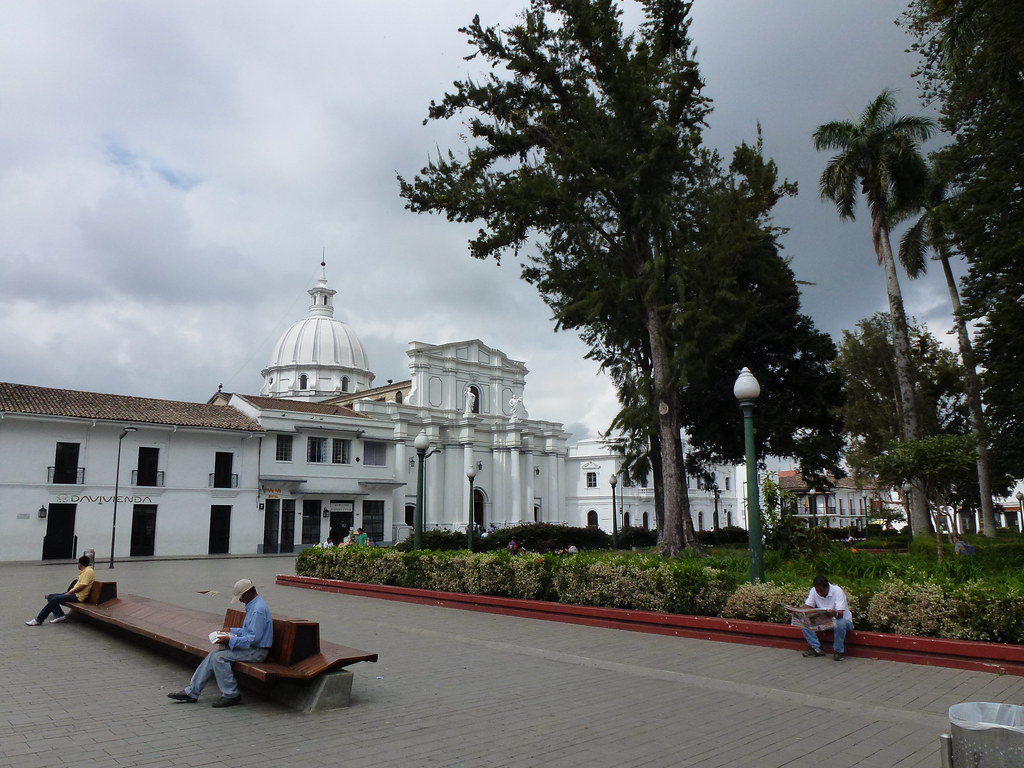
[Image: Taco Witte]
What to do in Popayan, Colombia
Celebrate Easter at Popayan’s Semana Santa. Popayan is world-renowned for its festivities over Easter with huge parades honouring Jesus’s life and death. They’ve been performed regularly since the sixteenth century, and are so respected that in 2009 they were added to UNESCO’s Intangible Cultural Heritage Lists.
People-watch in Parque de Caldas. The city’s central square was named after Francisco Jose de Caldas, a revolutionary hero and one of Popayan’s most famous citizens. There’s a statue of him in the park’s centre.
Check out the Torre de Reloj. This clocktower holds a clock which was originally constructed in Croydon, England, before being shipped across to Colombia (this is probably only interesting to people like me from South East London!)
Watch the sunset from Cerro el Morro de Tulcan. What looks like a grass-covered hill is actually an ancient pre-Columbian pyramid, which had already been abandoned by the time the Spanish Empire arrived in 1535. Go at sunset for gorgeous panoramic views across the city.
Find Your Popayan Hostel Here!
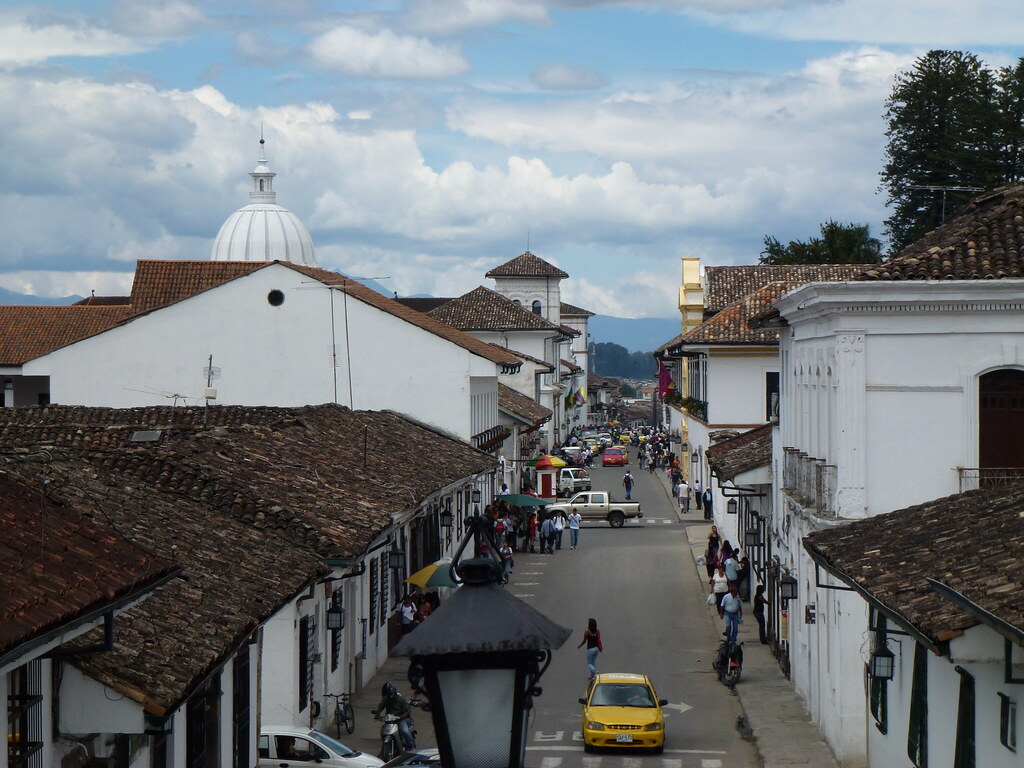
[Image: Taco Witte]
Visit the world’s most beautiful church in Pasto
This southern Colombian city is just across the border from Ecuador, so it’s often treated as a quick stop by Colombia backpackers. Yet Pasto is actually one of the oldest spots in the country with a wealth of history – and its annual Blacks and Whites Carnival is the largest festival in southern Colombia.
I passed through Pasto relatively fast on my way up to Medellin, but really enjoyed the two days I spent there. It’s a relatively chilly city so make sure you’ve got a jacket!
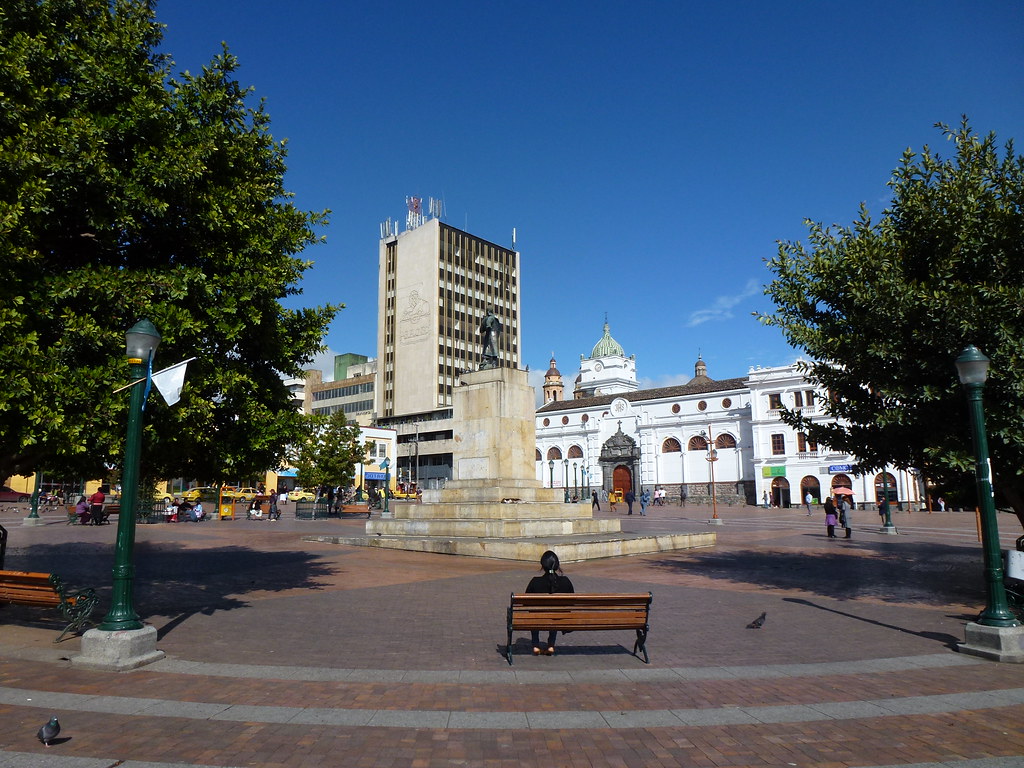
[Image: Taco Witte]
What to do in Pasto, Colombia
Celebrate at Carneval de Negros y Blancos. Pasto is best known for the week-long Blacks and Whites Carnival in early January, where locals dress up entirely in black and then white on different days to illustrate harmony and racial diversity. The carnival involves huge processions, classic car shows, costumed parades, foam fights, chalk paintings on the pavements, and people painting each other all over the place.
Visit the Carnival Museum. If you aren’t in Pasto in January, you can see examples of traditional carnival costumes at the city’s museum and learn about the festival’s origins. Find this place in the Pandiaco neighbourhood.
Gaze at Las Lajas Sanctuary. This stunning Gothic church was built in the early 1900s and perches on a bridge above the Guáitara River canyon. It’s been compared to Montserrate in Spain and is widely regarded as one of the world’s most beautiful churches. It’s a few hours away from Pasto – catch a colectivo bus to Ipiales, which takes 2 hours and costs about 15,000 COP, then at Ipiales you can take another colectivo to Las Lajas.
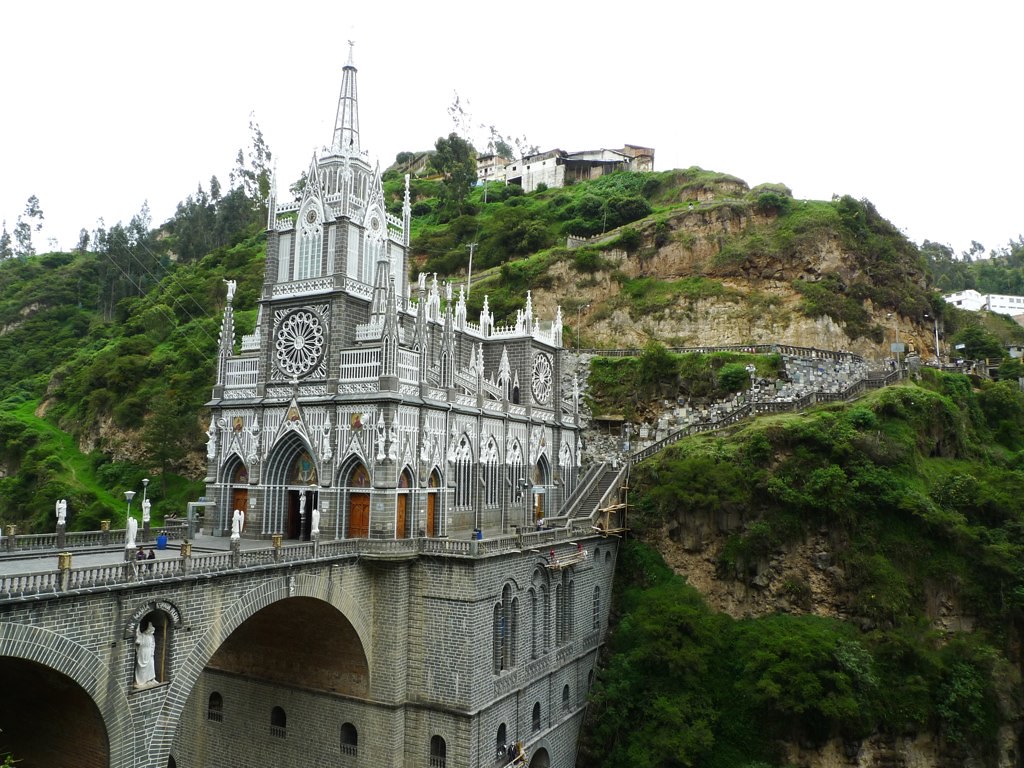
[Image: Warren Talbot]
Dance the night away in Cali
Cali is the world capital of salsa dancing, and there’s constant music in this sultry Caribbean city. I spent most of my time in Cali either sweatily learning to salsa or being rather hungover after a night at a salsa club. As a result I didn’t see much of the city’s more cultural side, but there are lots of museums and beautiful architecture here too.
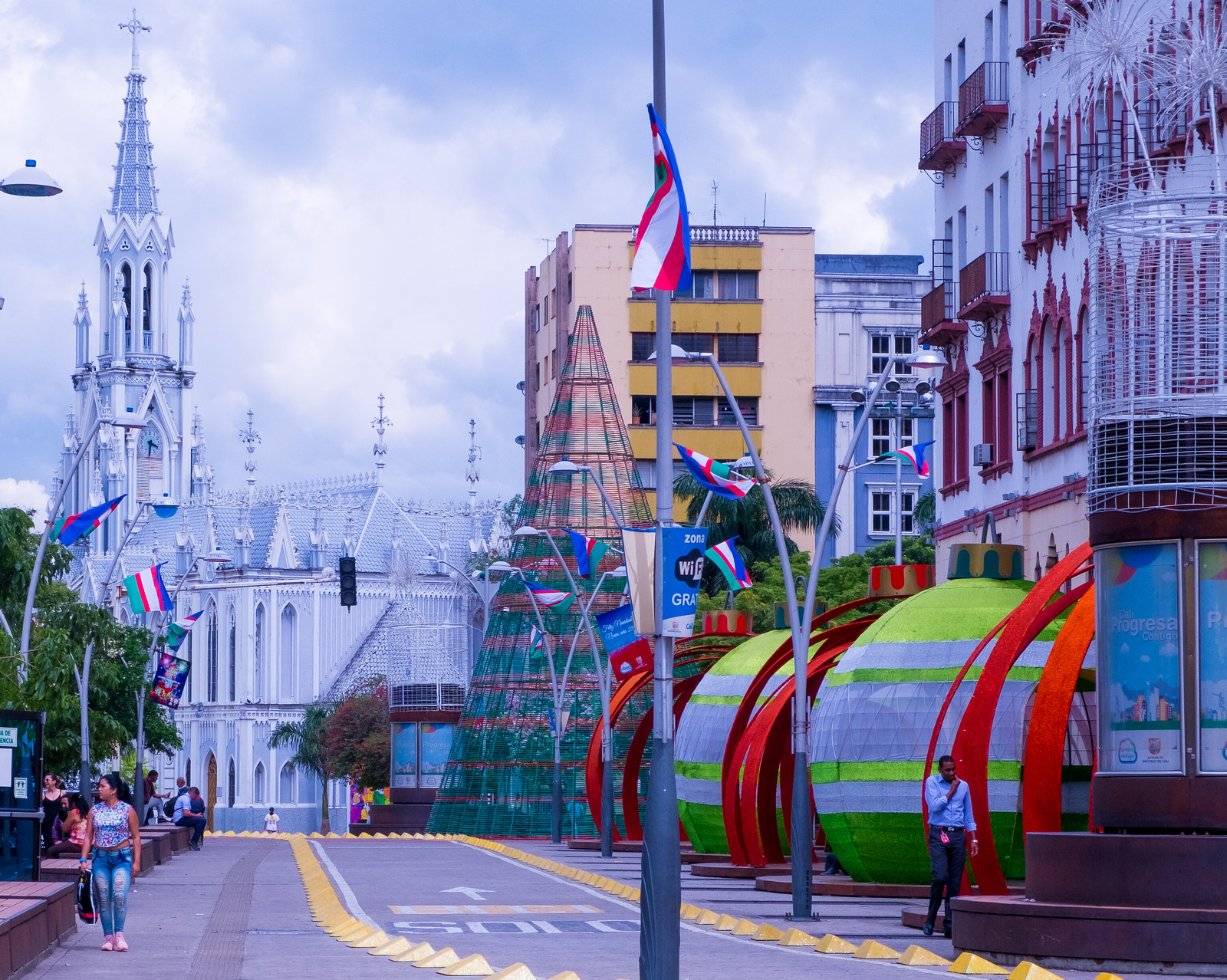
[Image: Reg Natarajan]
What to do in Cali, Colombia
Hike up to Cristo Rey. Cali is best seen from above, so head for the panoramic views beside Cali’s Christ statue. At 21 metres high, it’s Colombia’s biggest statue (and the tenth largest Christ statue in the world!). The uphill walk takes an hour but is rumoured to be quite dangerous, so take a taxi/bus instead.
See the butterflies at the Andoke Foundation. Just outside Cali is a butterfly house with a scalable map of Colombia. It’s a fun way to spend an afternoon!
Go salsa dancing. As the city is the birthplace of salsa, it’d be remiss to not indulge in some salsa while in Cali. Our hostel, like many others, offered free salsa classes – which also meant we could demonstrate our new moves at salsa clubs in the evenings! Juanchito is the most popular neighbourhood for salsa clubs, just outside the city centre.
Explore the Cat Park. Along the banks of the Rio Cali in the north of the city there are over a dozen cat statues, all painted by different local artists. The biggest one, El Gato del Rio, was donated by Bogota-born artist Hernando Tejada after he moved to Cali and died soon after. His cat has become a symbol for the city.
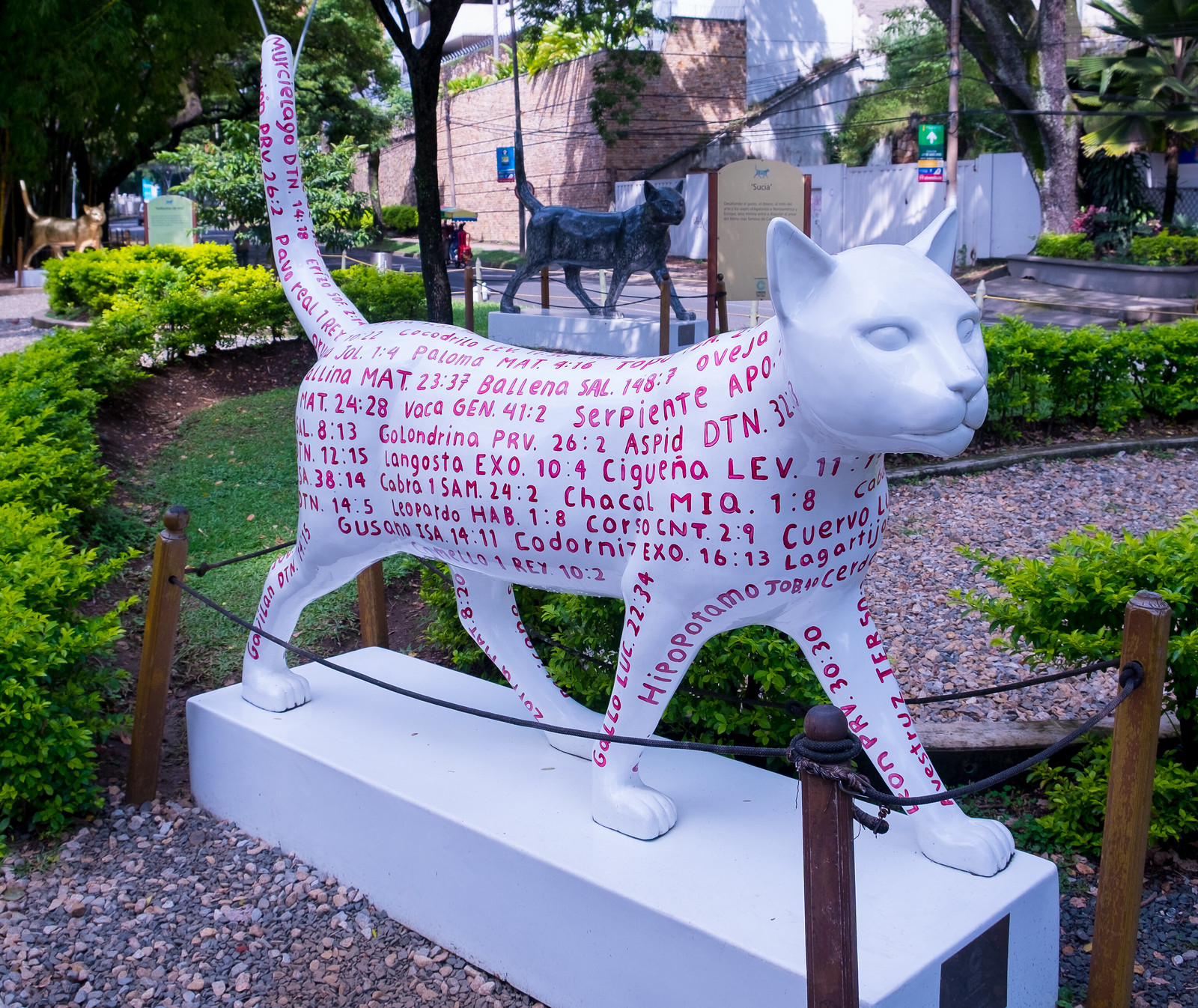
[Image: Reg Natarajan]
Soak up the sun in Santa Marta
Santa Marta was the first place the Spanish settled in Colombia. The city itself isn’t particularly beautiful as it’s still a commercial port, but it does have its charms. The beachfront is always filled with vendors selling souvenirs and street food, there’s plenty of backpackers milling about, and it’s also a great base from which to explore Colombia’s Caribbean coastline. Find a hostel you’re happy to leave your bags in and head out to places like Taganga, Minca, Costeño, Palomino and Tayrona National Park.
I travelled through Santa Marta three or four times and always enjoyed it – perhaps because there always seemed to be a street festival or party, and as it was our first destination in Colombia I was already falling hopelessly in love with the country. Plenty of backpackers end up working in hostels here because they don’t want to leave!
What to do in and around Santa Marta, Colombia
Visit the place Simon Bolivar died. The legendary hero was a Venezuelan soldier who liberated the South American continent from the Spanish empire (Bolivia is named after him). Bolivar died aged 47 of arsenic poisoning in Santa Marta while planning to set sail for exile in Europe: the hacienda where he died is now a museum and historical landmark. Head to La Quinta de San Pedro de Alejadrino in Santa Marta, and visit the grounds and art gallery.
Trek to the Lost City of La Ciudad Perdida. The 4-6 day hike (roundtrip) takes you to an ancient settlement built by the Tayrona people which pre-dates Machu Picchu and still lies deep in the jungle. Discovered in the 1970s, this 47km route passes through tropical rainforest and indigenous Kogi villages.
Go scuba diving in Taganga. This used to be a little fishing village, but Taganga has enjoyed a boom in backpacker tourism, particularly for its very popular nightlife. The beach is pretty grubby with a lot of rubbish and too many tourists, but it’s apparently a very cheap spot to get your PADI certification or do a bit of scuba diving. Alternatively, grab a taxi from Santa Marta and spend all night partying at one of Taganga’s many clubs.
Read more: Befriending the local beggars in Santa Marta, Colombia
Where to stay in Santa Marta:
I stayed in a few hostels in Santa Marta. The first was Candela & Chocolate, where we made fajitas in the cramped kitchen and ate in a sweaty mess in the cramped courtyard – not highly recommended. We quickly moved on to La Brisa Loca, a much more backpacker-friendly place with a little indoor pool and a rooftop terrace bar to while away our evenings in.
The next time I came back to Santa Marta we found a new spot at The Dreamer, which has another branch in Palomino – so we stayed at both of them!
Book Your Hostel Bed in Santa Marta Here!
Read more: Meeting the Kogi tribes on the Caribbean coast
Sleep above the trees in Minca
After the sticky suffocating heat of Santa Marta, escaping into the fresh air of Minca is bliss. This little village has enjoyed a boom in tourism because of its 650m altitude and its opportunities for tranquil outdoor activities like hiking, mountain biking and birdwatching.
We only learned about Minca when the owner of Casa Elemento Hostel appeared in a bar in Santa Marta, handing out leaflets. Once he mentioned the giant hammock overlooking the trees, it took no time for us to follow him to his Minca hostel – and I’m so glad we did.
What to do in Minca, Colombia
Get some fresh air while hiking. There are plenty of hiking trails around Minca. A popular route is the all-day Minca – Mundo Nuevo – La Candelaria – Pozo Azul – Minca, or the loop to Los Pinos.
Visit the Marinka and Pozo Azul waterfalls. Marinka has a natural swimming pool just below the falls, and Pozo Azul has two little waterfalls plus a popular pool.
Go bird watching in the cloud forest. Colombia has over 1900 bird species, making it the most bird-diverse country in the world (bet you didn’t know that!). Ornithologists flock to Minca to see woodpeckers, hummingbirds and toucans, as well as a number of species endemic to this region of Colombia only. There are lots of tours to take aspiring birdwatchers out – Jungle Joe’s has great reviews.
Drink fresh cafe tinto at La Victoria coffee plantation. If you don’t make it to a coffee farm in Salento, there’s a few stunning coffee plantations in Minca. A tour in English or Spanish costs 15,000 COP and includes a cup of coffee.
Stay at Casa Elemento Hostel. This hostel is infamous in Colombia thanks to the giant hammock, but it’s also one of the most isolated and disconnected hostels I’ve ever stayed in: there’s no wifi, gorgeous sunsets, and campfires at night. Sadly the recent reviews don’t sound wholly positive but I’d still recommend it – if only for the view!
Read more: Going off-grid in a giant hammock at Casa Elemento, Minca
Camp on the beach in Parque Tayrona
Tayrona National Park feels like something prehistoric. There are huge boulders littering the sand beaches with jungle vines just metres from the water’s edge, and mountains sitting on the horizon. Part of the draw of Tayrona for backpackers is the challenge involved in reaching it: Tayrona is sealed off from the main road, meaning you have to hike in, and there’s a complete disconnect from the rest of the world once you’re inside.
Although I enjoyed spending a few days at Parque Tayrona it’s worth remembering that too much of a good thing can be harmful: Tayrona used to be virtually empty, but I’ve heard it’s now overwhelmed with tourists.
What to do in Parque Tayrona, Colombia
First you have to hike from the entrance to Arrecifes camping site: it’s a 3km route and takes you through the jungle, along the sand, and clambering up boulders for 45 minutes.
Once at Arrecifes, you can choose whether you’re camping, sleeping in hammocks, or renting a cabana. Hammocks cost between 10,000 and 20,000 COP, while a tent can cost 25,000 to rent. There are also accommodation options at La Piscina and El Cabo.
Alternatively, you can stay at the Ecohabs hostel, which is just inside the park’s entrance. When I visited Tayrona, the Ecohabs were operating solely as an expensive hotel (I remember wistfully looking at their fancy roofs!). They’ve recently rebranded as a hostel and prices are much more reasonable, so if camping’s not your style then I’d opt for them.
Activity wise, Tayrona is a typical beach destination. You can snorkel, swim and sunbathe at the many beaches, venture into the jungle for a bit of exploring and wildlife spotting, watch the sun set, play cards with your fellow backpackers, and drink beer. There are plenty of little bars and cafes dotted around to eat your meals at, too.
Essential packing for Tayrona:
- plenty of water for the length of your stay (in bottles not bags)
- sunscreen
- mosquito spray
- snack food
- plenty of cash as there are no ATMs
- toilet paper
Hiking in that heat is intense so bring as little else as possible.
Rules in Tayrona:
Tayrona has a strict no plastic policy, particularly wrappers and bags, and there’s no alcohol allowed in, so be aware of what you pack. You’ll also need your passport to get through the main gate, and there’s a daily limit of 6,500 people allowed in each day so arrive early or book your entry ticket online here.
Book Your Hostel in Tayrona National Park Here!
Read more: Is Colombia’s Parque Tayrona worth the price for paradise?
Explore the colonial walled world of Cartagena
Cartagena is a port city, founded in 1533 as a strategic point for the Spanish empire. The walled old town seems unchanged since the 16th century: the narrow streets are still cobbled, the buildings are still colonial, and the atmosphere still feels special.
As the most visited city in Colombia, Cartagena is extremely popular with tourists. The dense crowds combined with the coast’s clammy tropical heat can be a bit overwhelming, so it’s worth trying to time your visit for the low season. That said, I adored the week I spent wandering the yellow-walled streets of this city – it’s a street photographer’s dream!
What to do in Cartagena, Colombia
Get a fortified view of the city from Castillo de San Felipe de Barajas. This huge fortress was designed by a Dutch engineer in 1639 to protect the Spanish against pirates while they shipped gold to Europe. It’s a fascinating building: you can explore the underground passageways and get a real sense of what life must have been like 400 years ago.
La Popa Monastery. For the best view of Cartagena, head up the hill to La Popa. There’s a 360 degree panorama up here, not to mention a beautiful little 17th century monastery with an intricately carved wooden altar and statues of the Virgin Mary. Take a bus or a taxi up here instead of walking, as it can be a bit dangerous on foot.
Ride through Cartagena on a Chiva bus. These rustic open-air buses essentially run a land-based booze cruise – they drive around the city playing loud music while passengers enjoy the ‘all you can drink’ rum and coke on offer, before dropping people off at various bars. Haggling for ticket prices is recommended, and although food is included it’s mainly just a taster, so it’s wise to eat beforehand.
Head to Playa Blanca for some sunbathing. Although Cartagena is on the water, the city’s beaches aren’t particularly nice for sunbathing or swimming – too many street vendors, an excess of rubbish and a fair bit of pollution. The best beach near Cartagena is Playa Blanca – either take a daytrip on an organised boat (overpriced) or catch the bus to Pasacabellos then take the little ferryboat across the river. The latter option takes just over an hour.
Soak up Cartagena’s nightlife in Plaza de La Trinidad. When the sun goes down, Cartagena comes alive. I spent my evenings in Plaza de la Trinidad where musicians played, acrobats performed tricks, and people snacked on street food and spontaneously started to dance.
Discover the street art of Getsemani. There’s a huge amount of street art in Cartagena, particularly in the neighbourhood of Getsemani. Pieces range from little tags to huge murals, and plenty of international artists have ventured here to leave their mark on Cartagena’s crumbling walls. Keep an eye out for the area’s beautiful door knockers too – in the past, the size of a home’s door knocker illustrated the status of the family who lived there.
Find Your Cartagena Hostel Here!

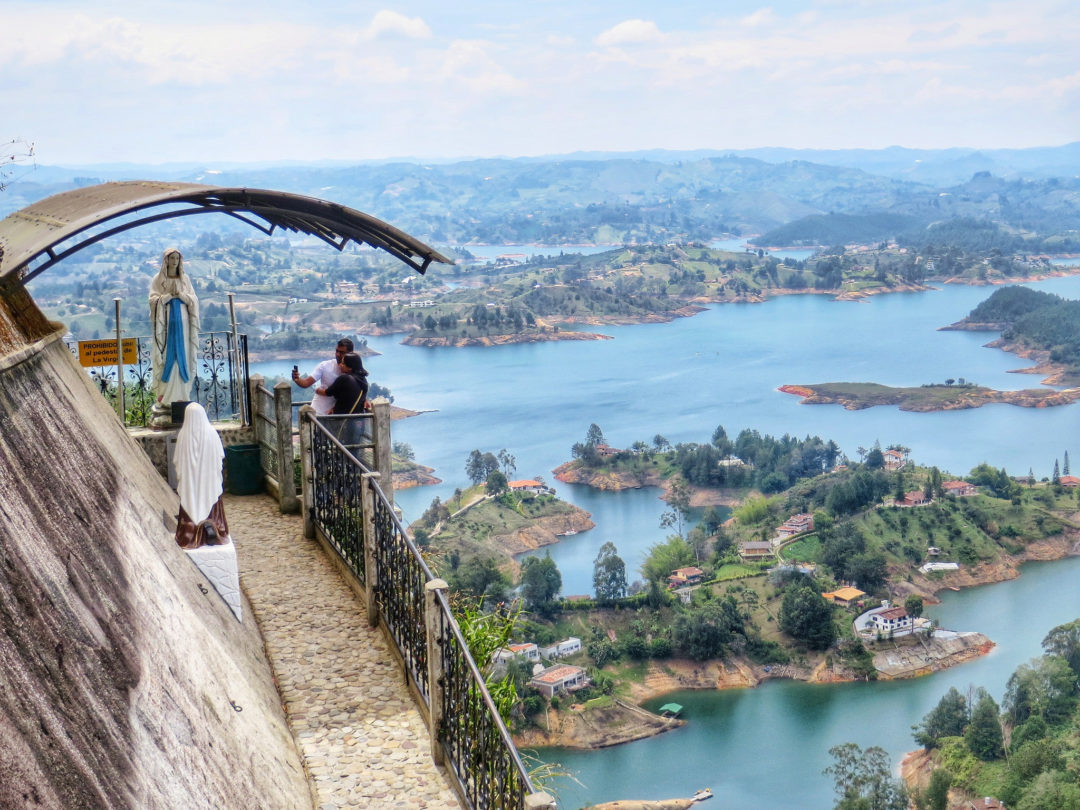

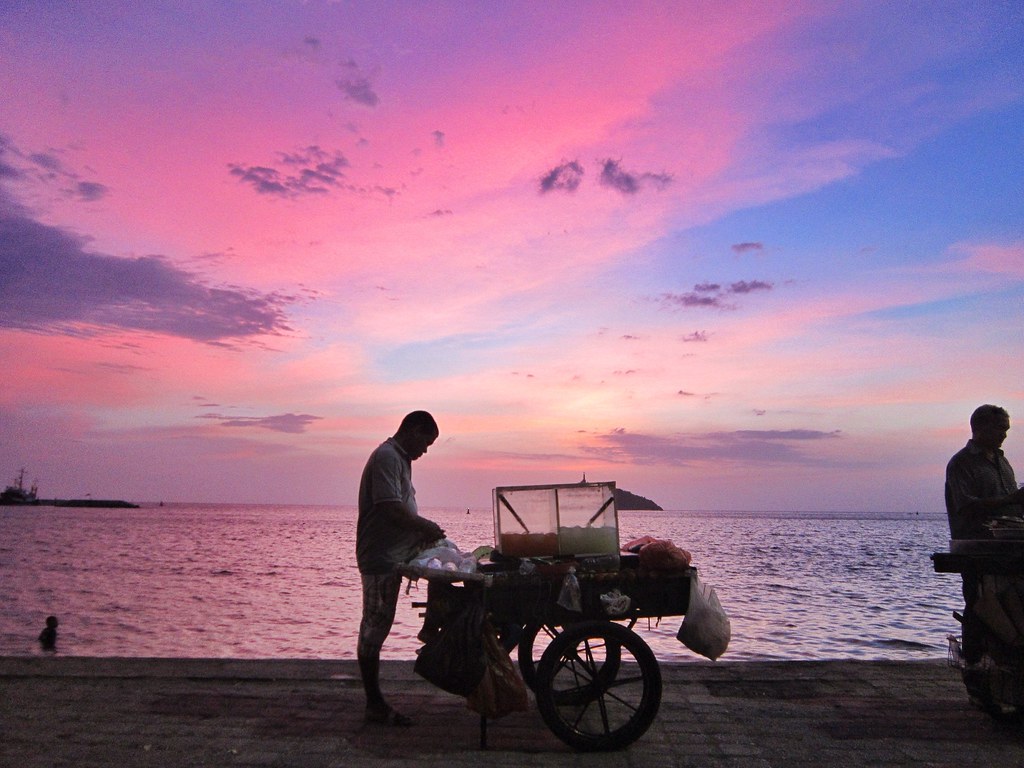

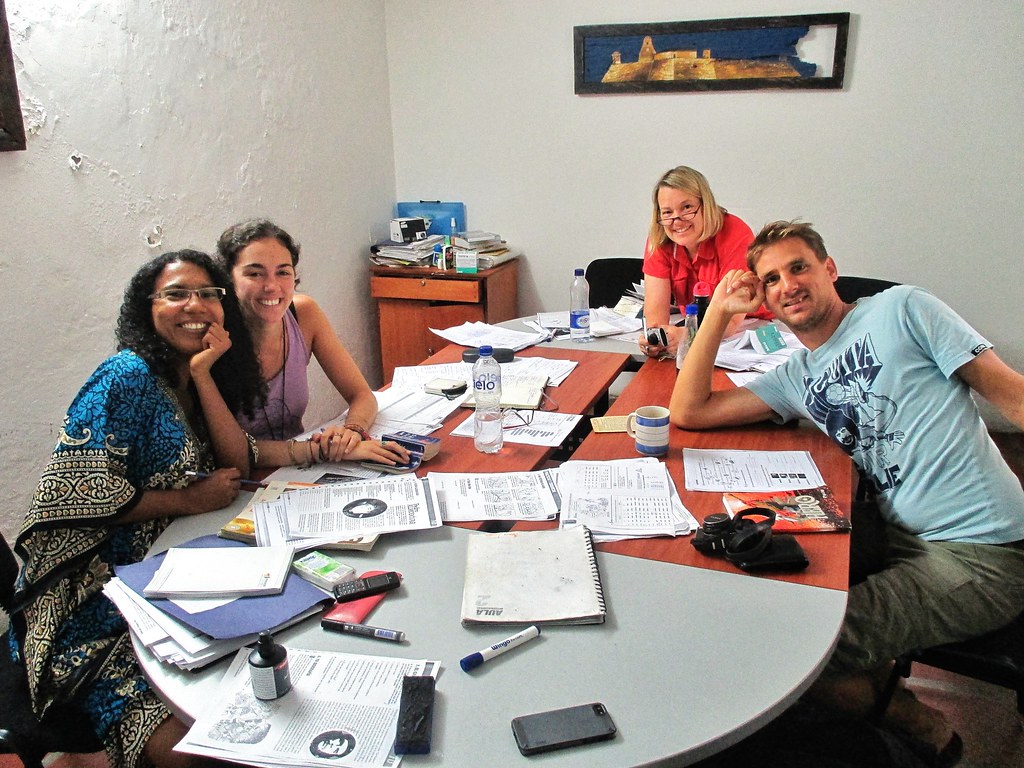
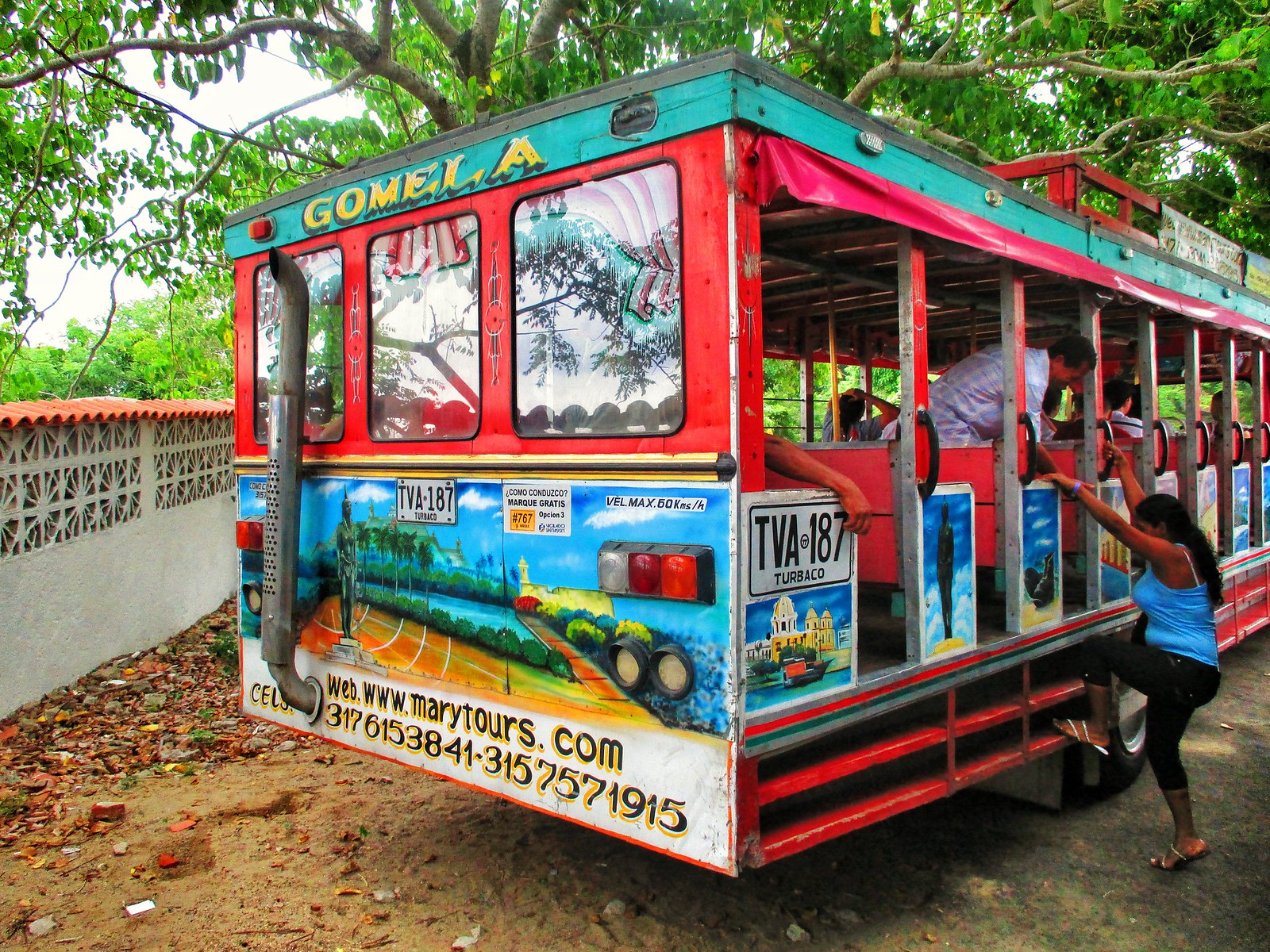


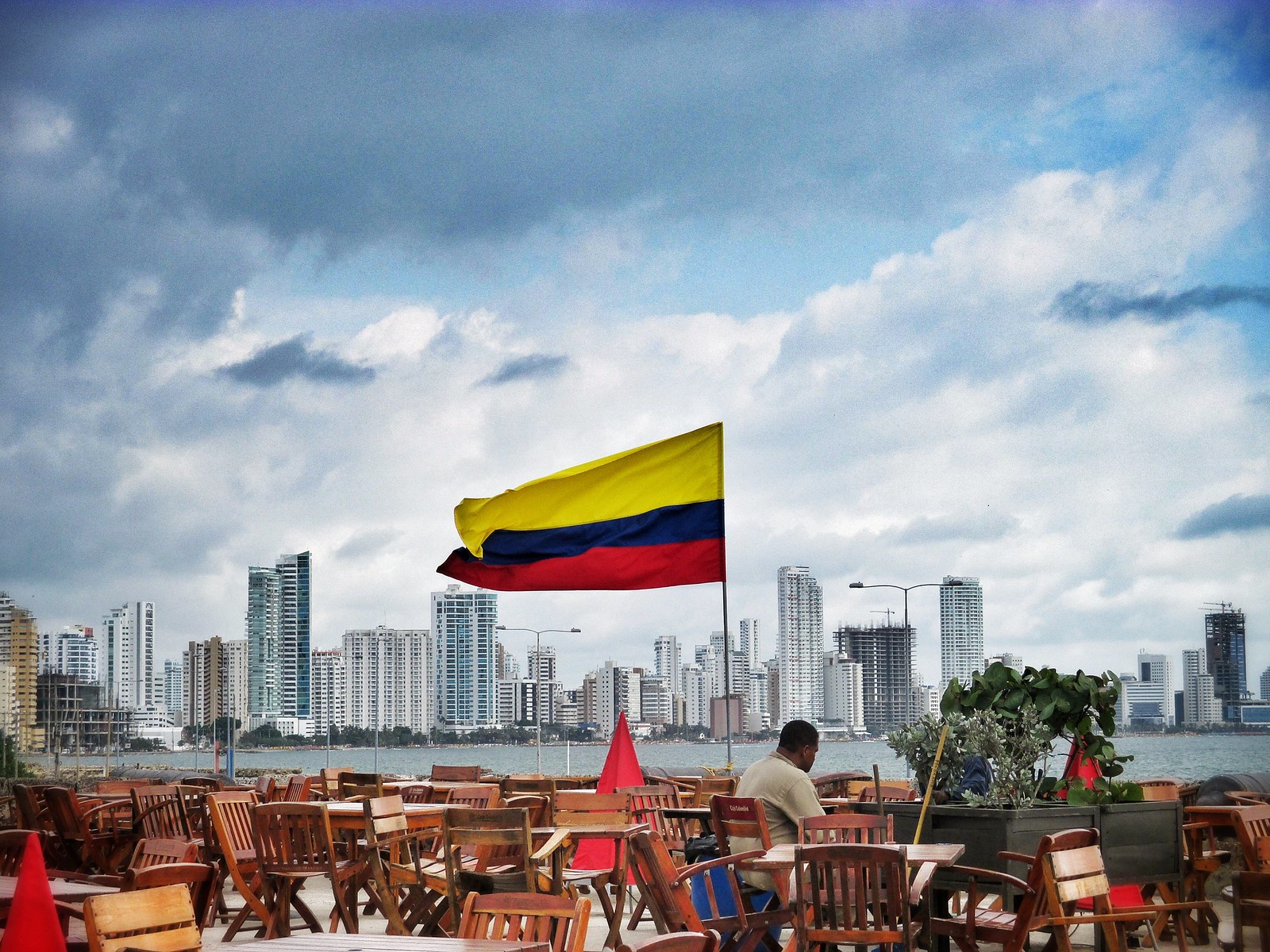
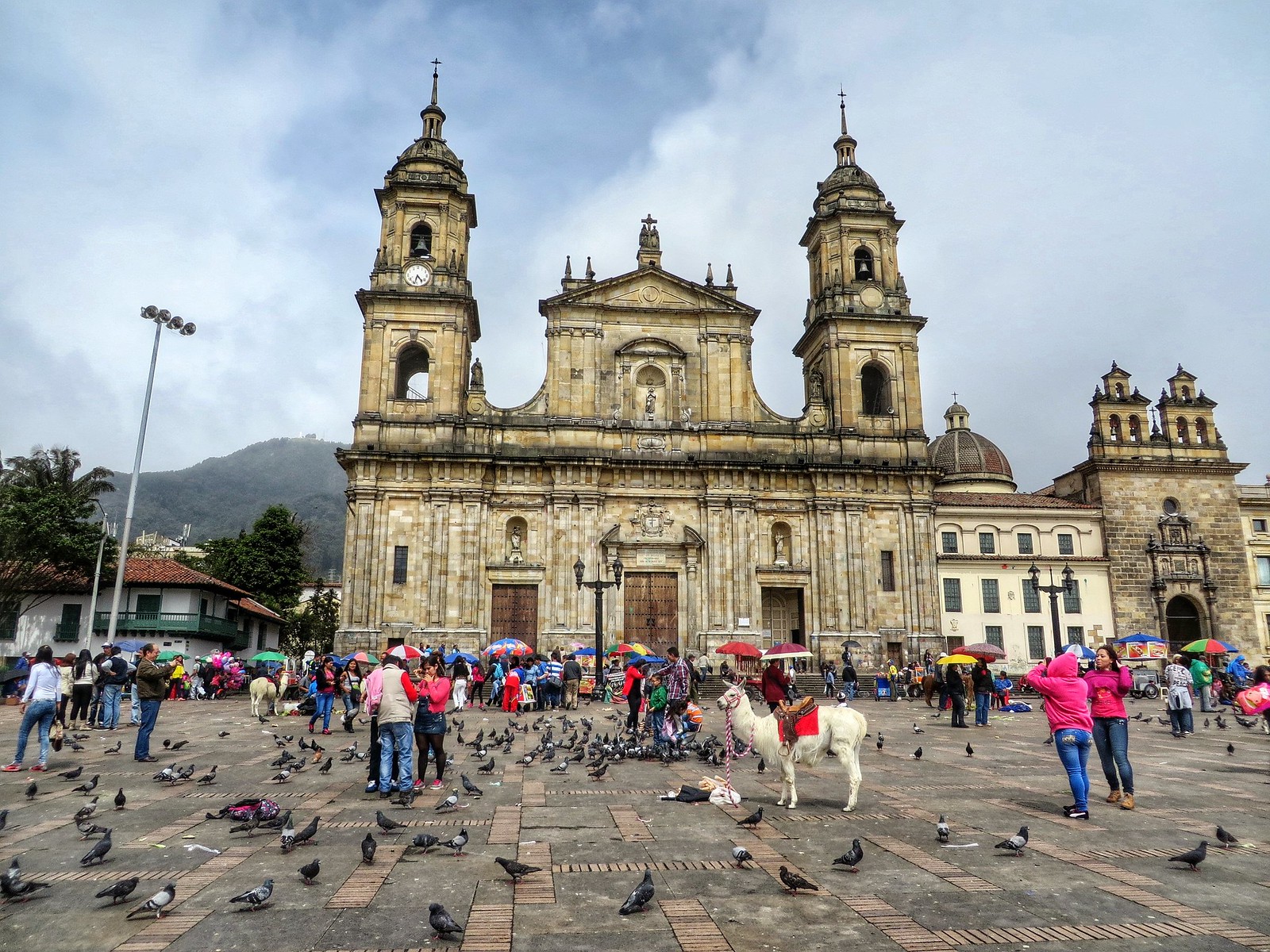
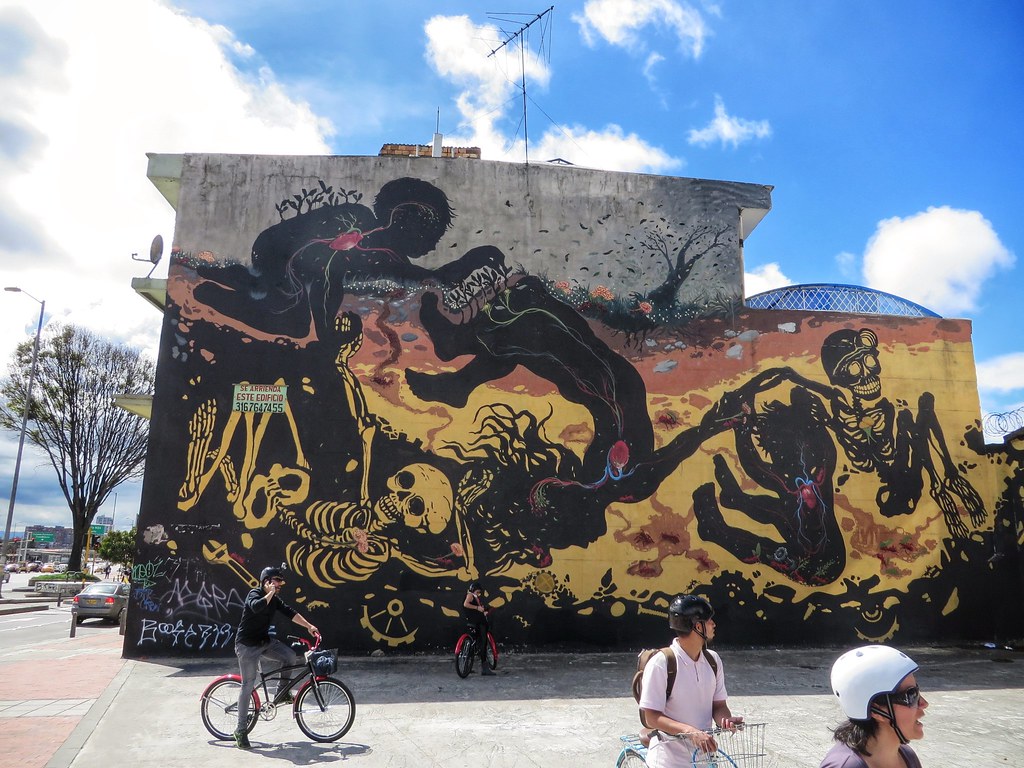

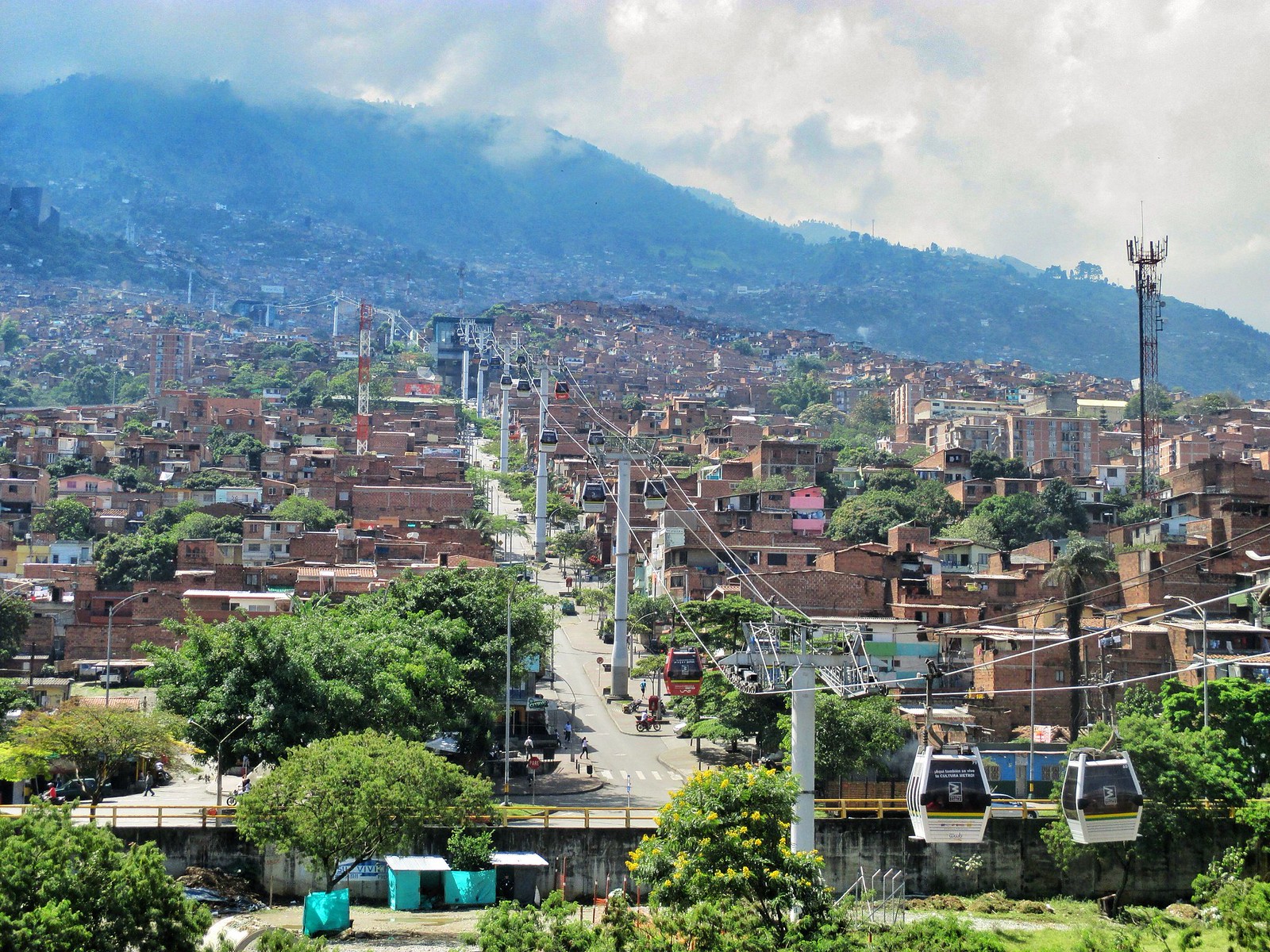
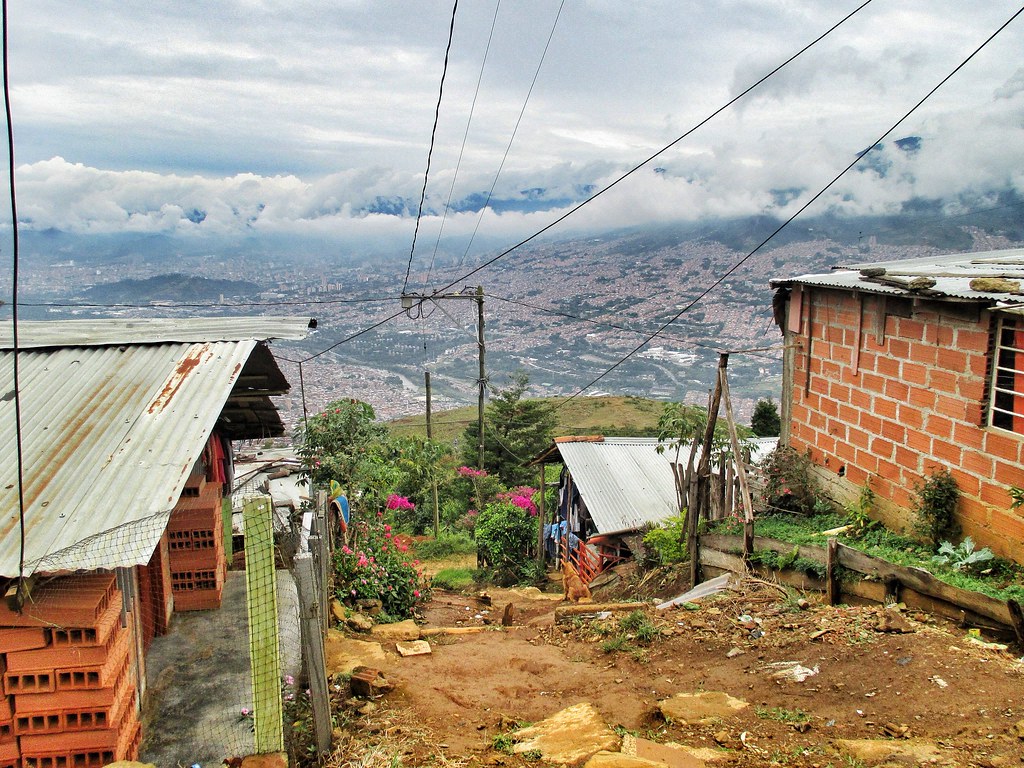
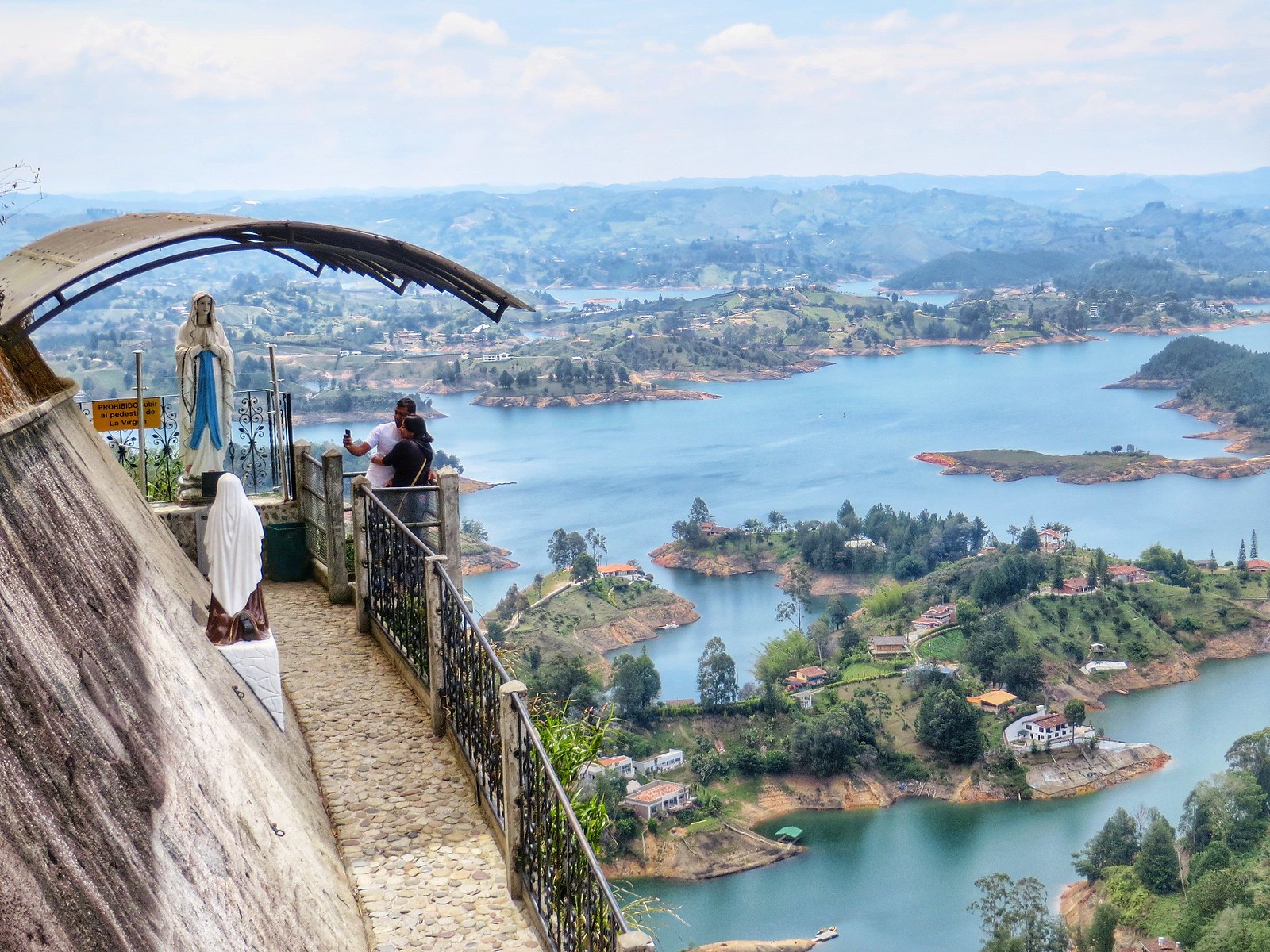


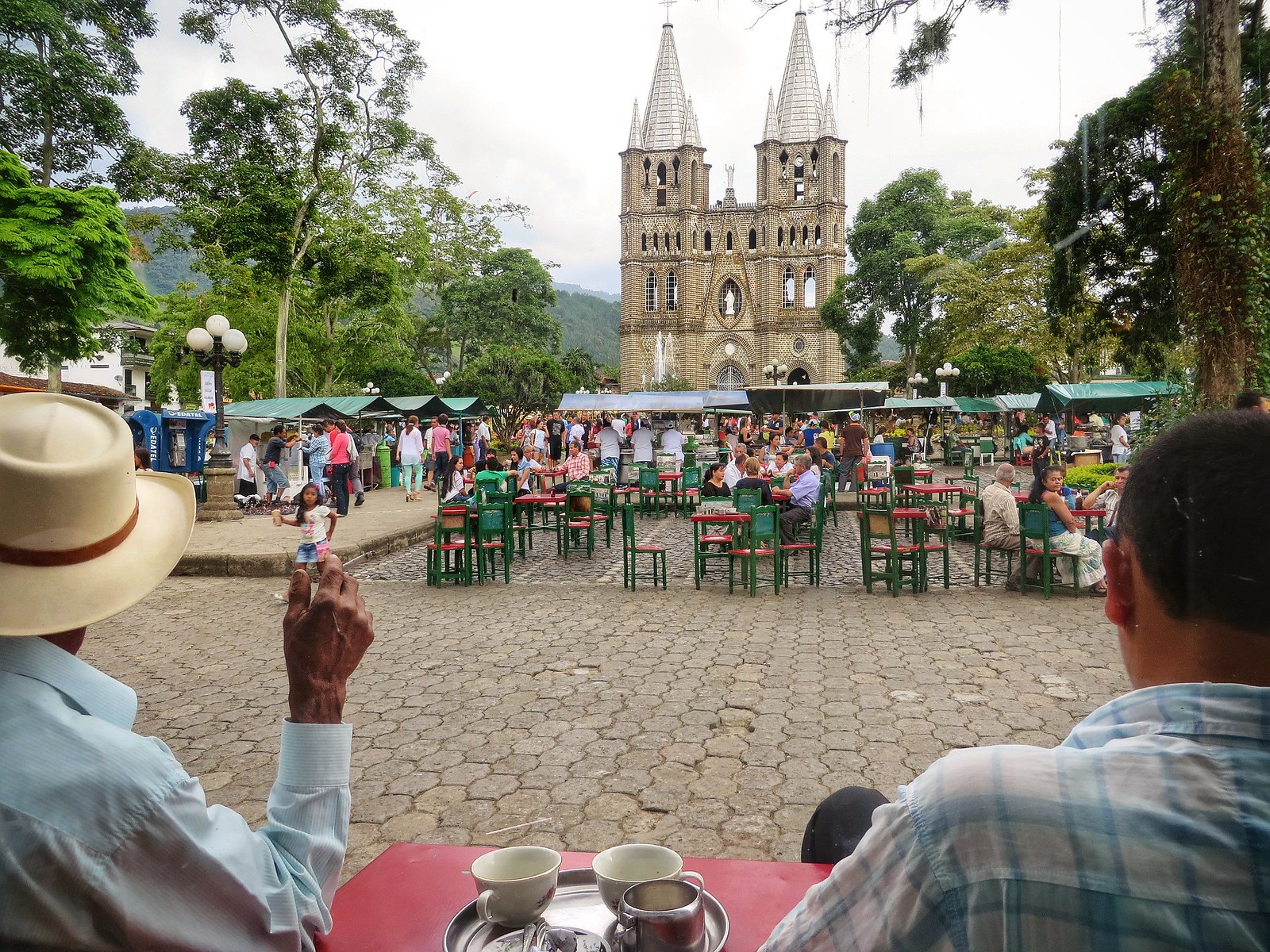
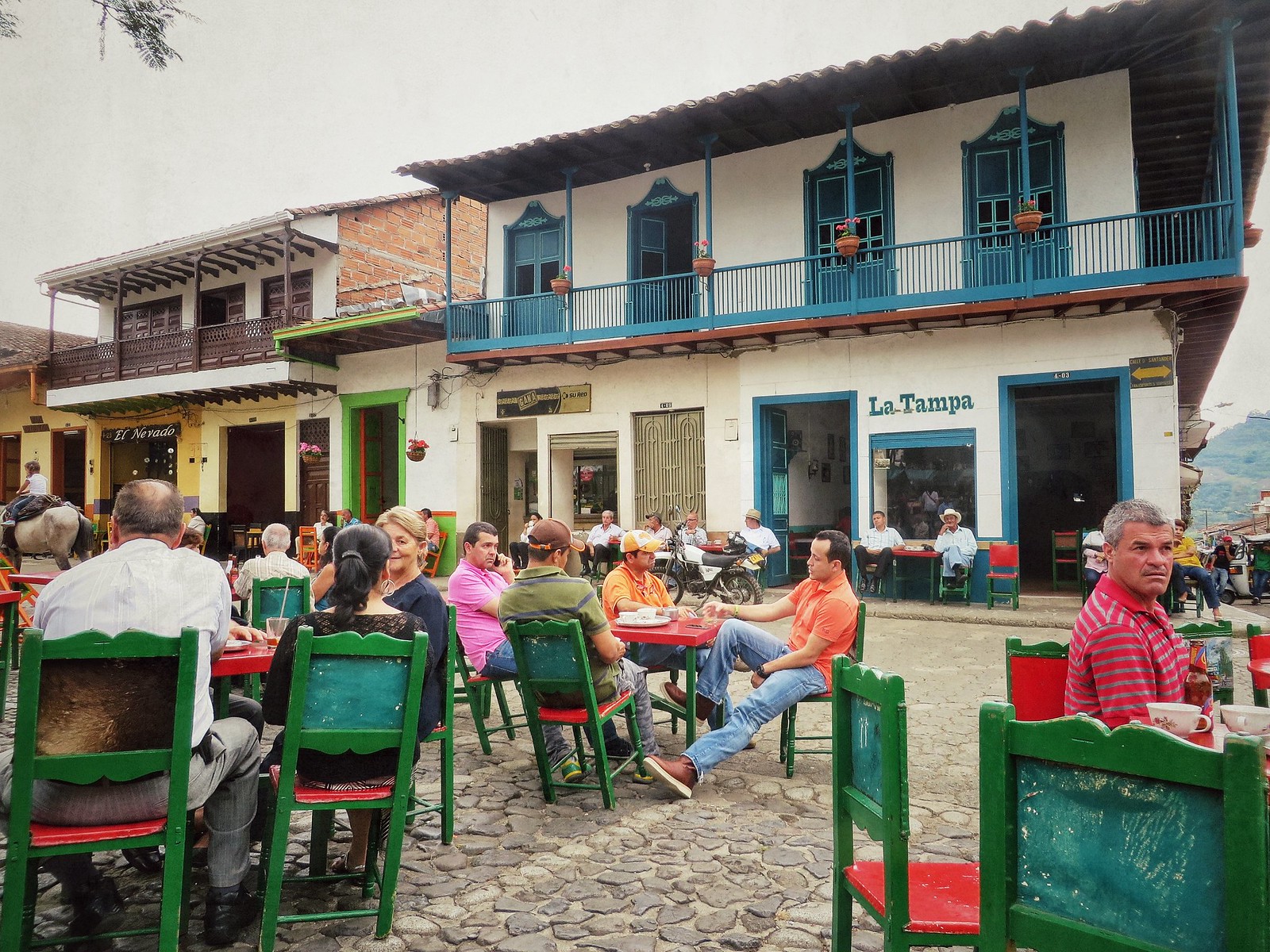
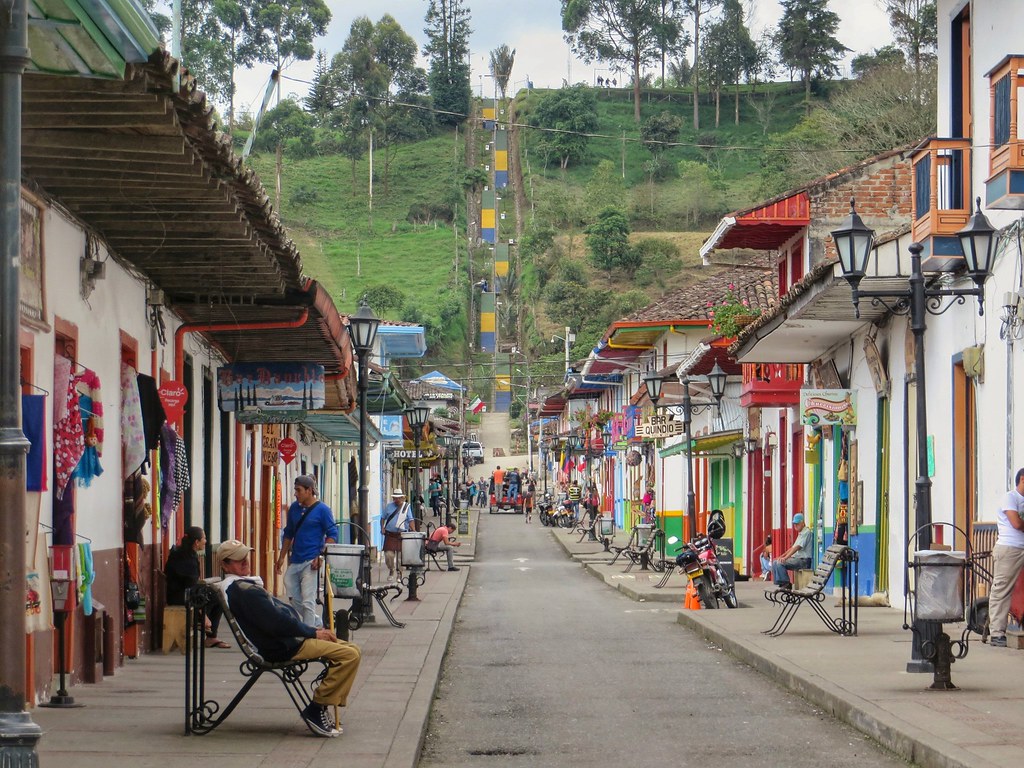
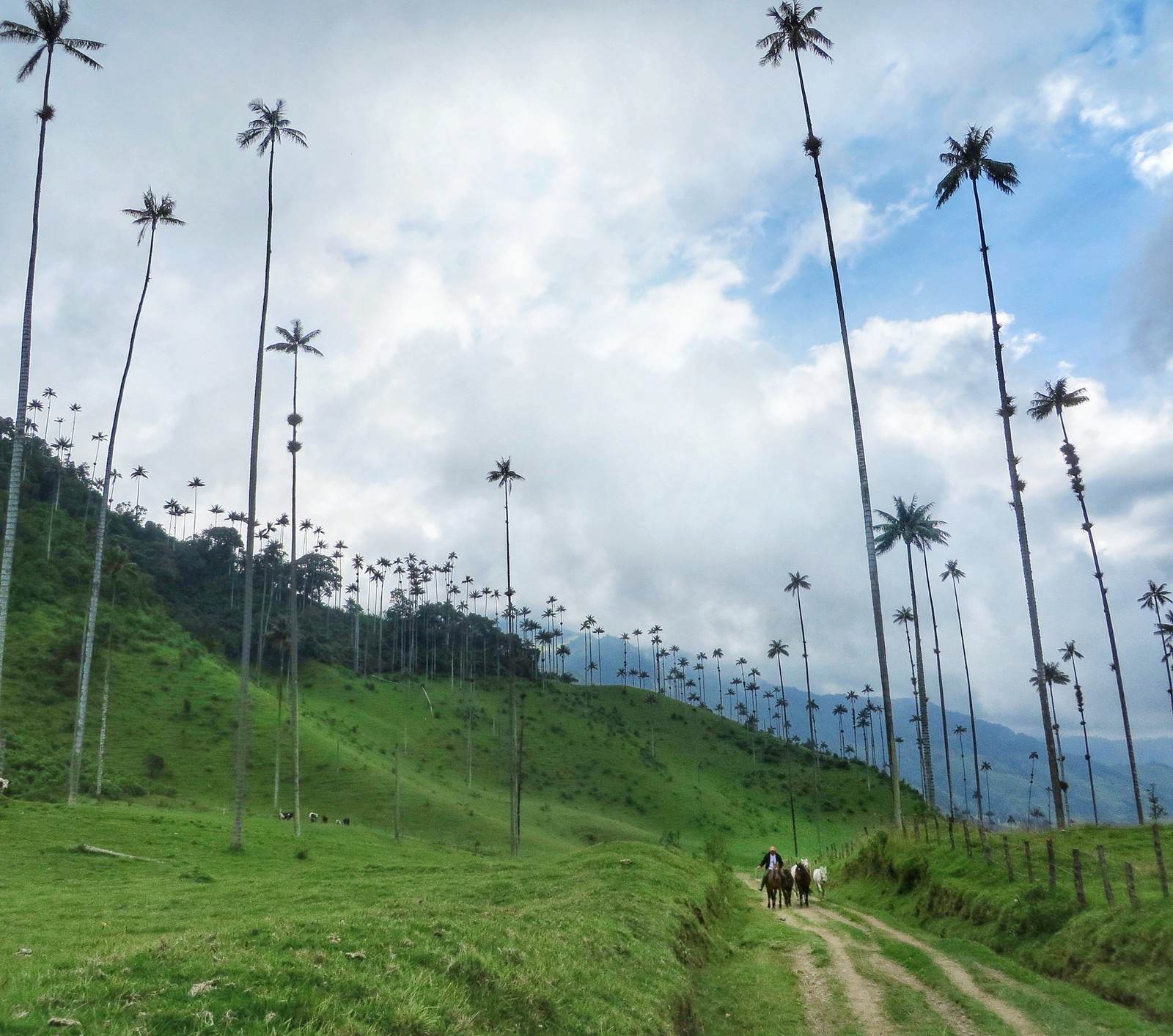
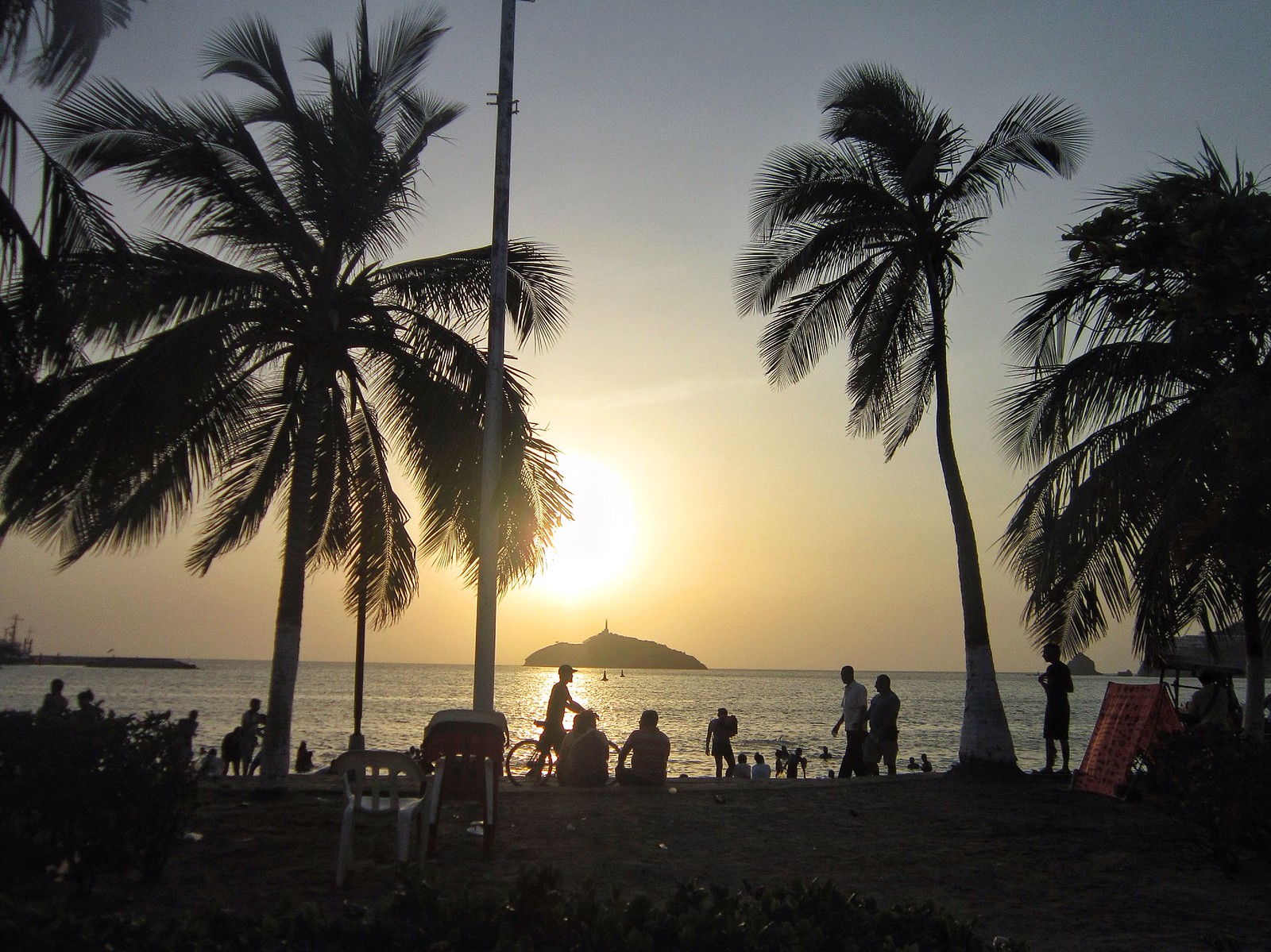
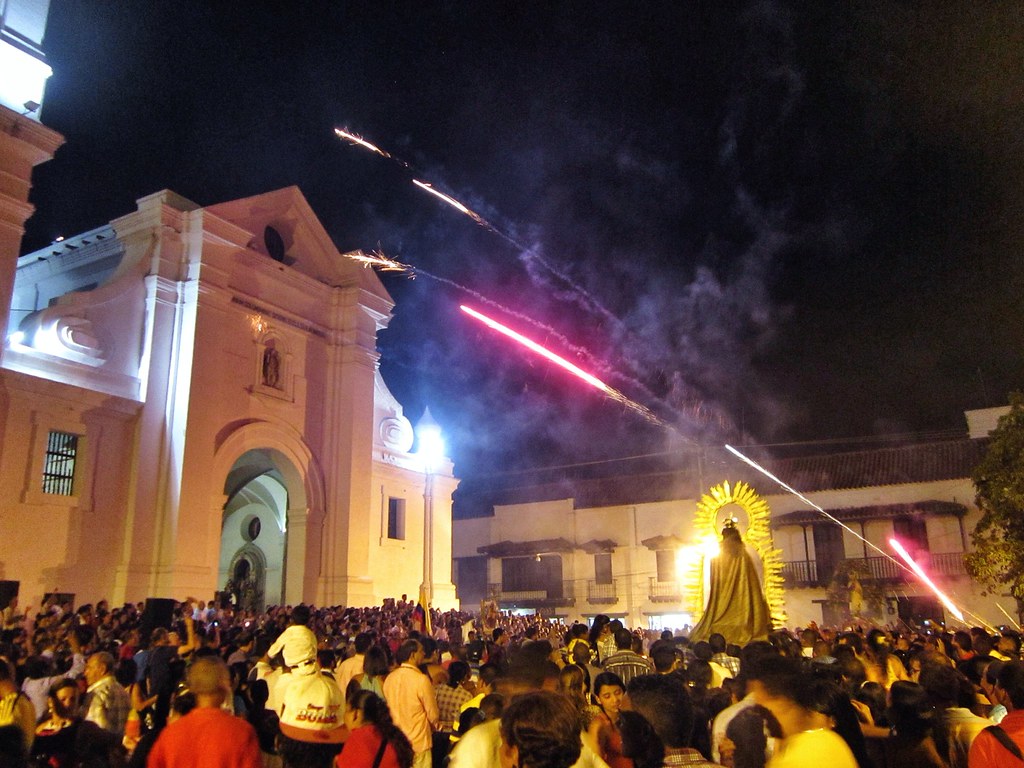
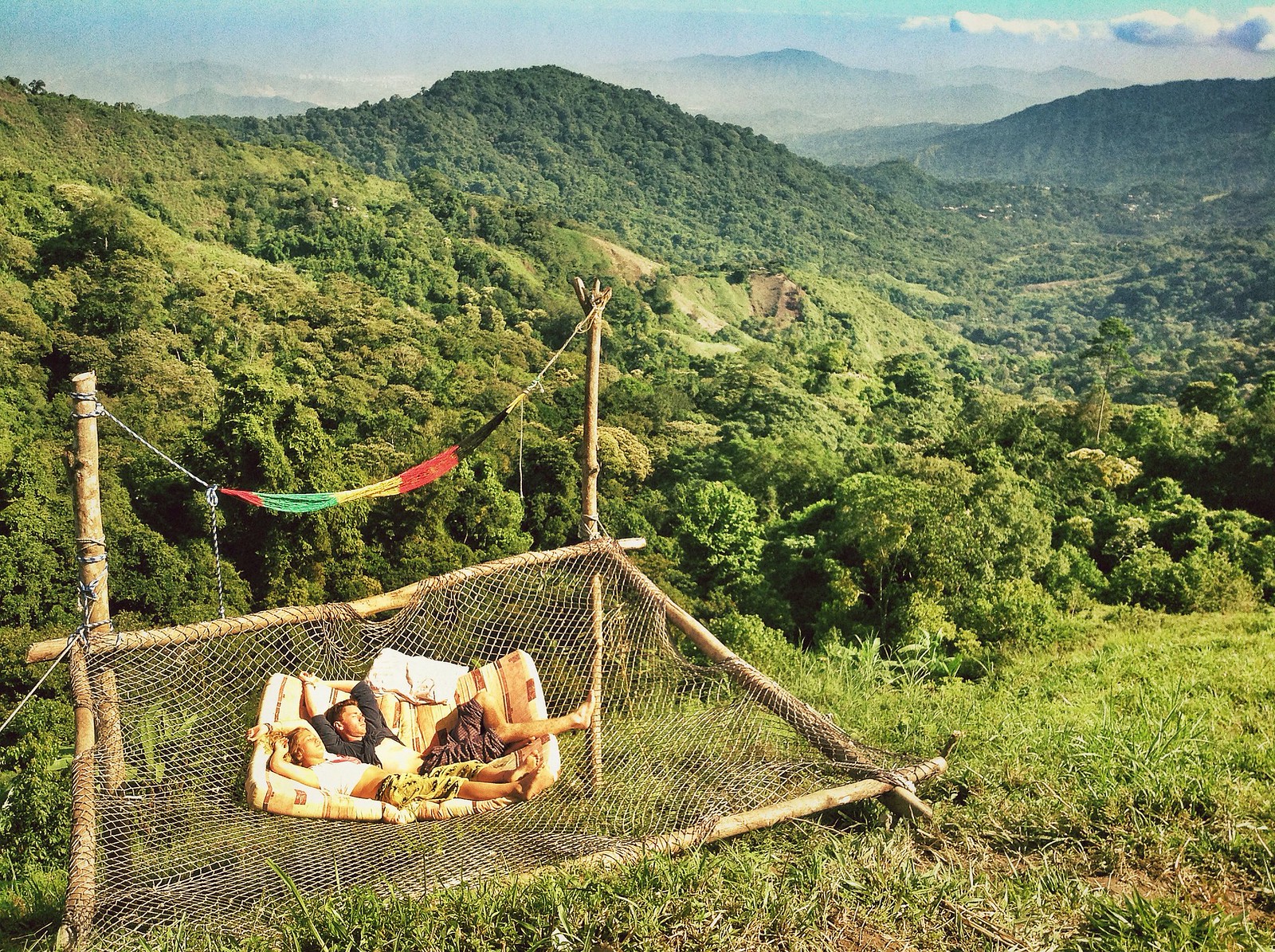
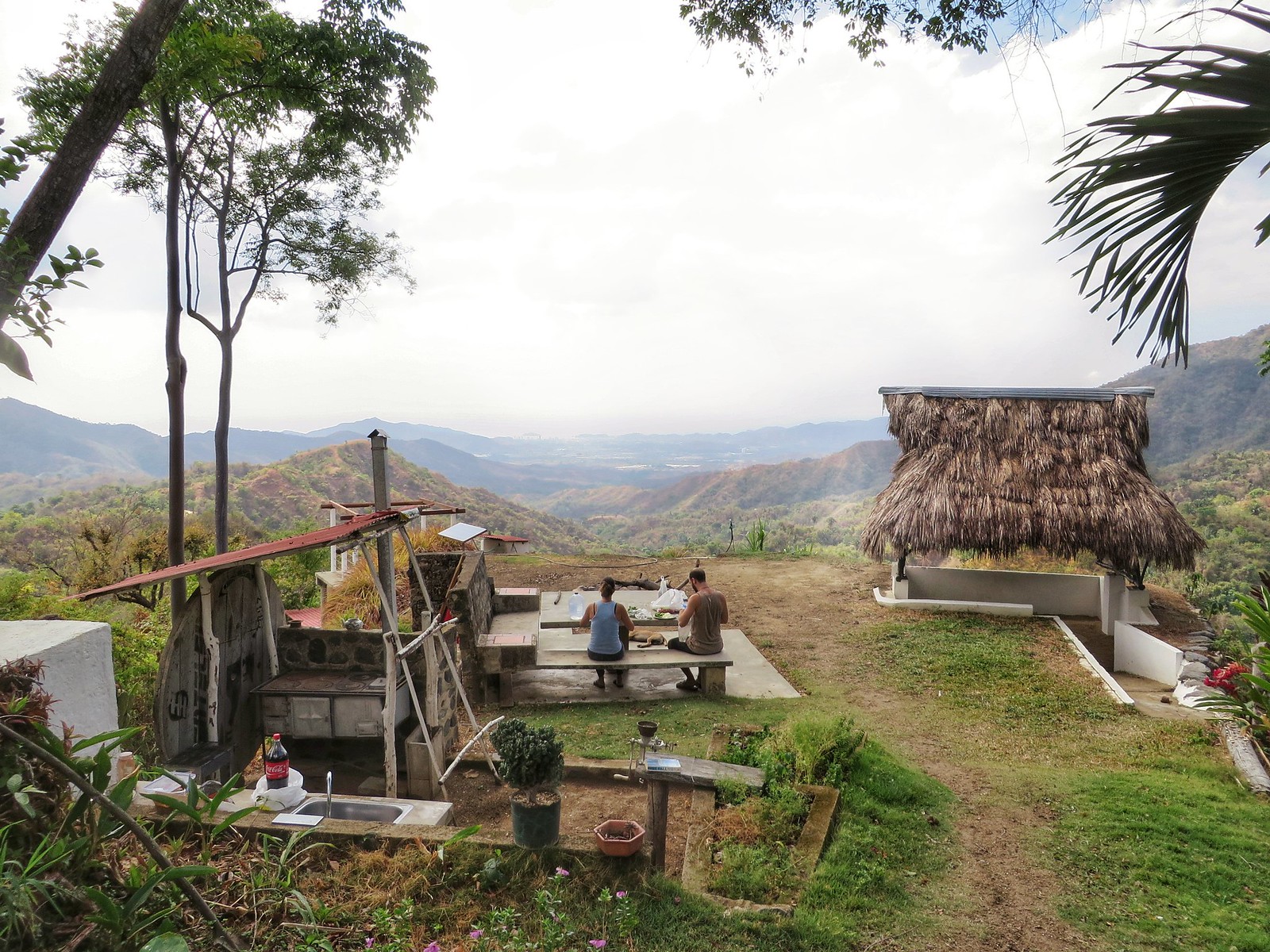
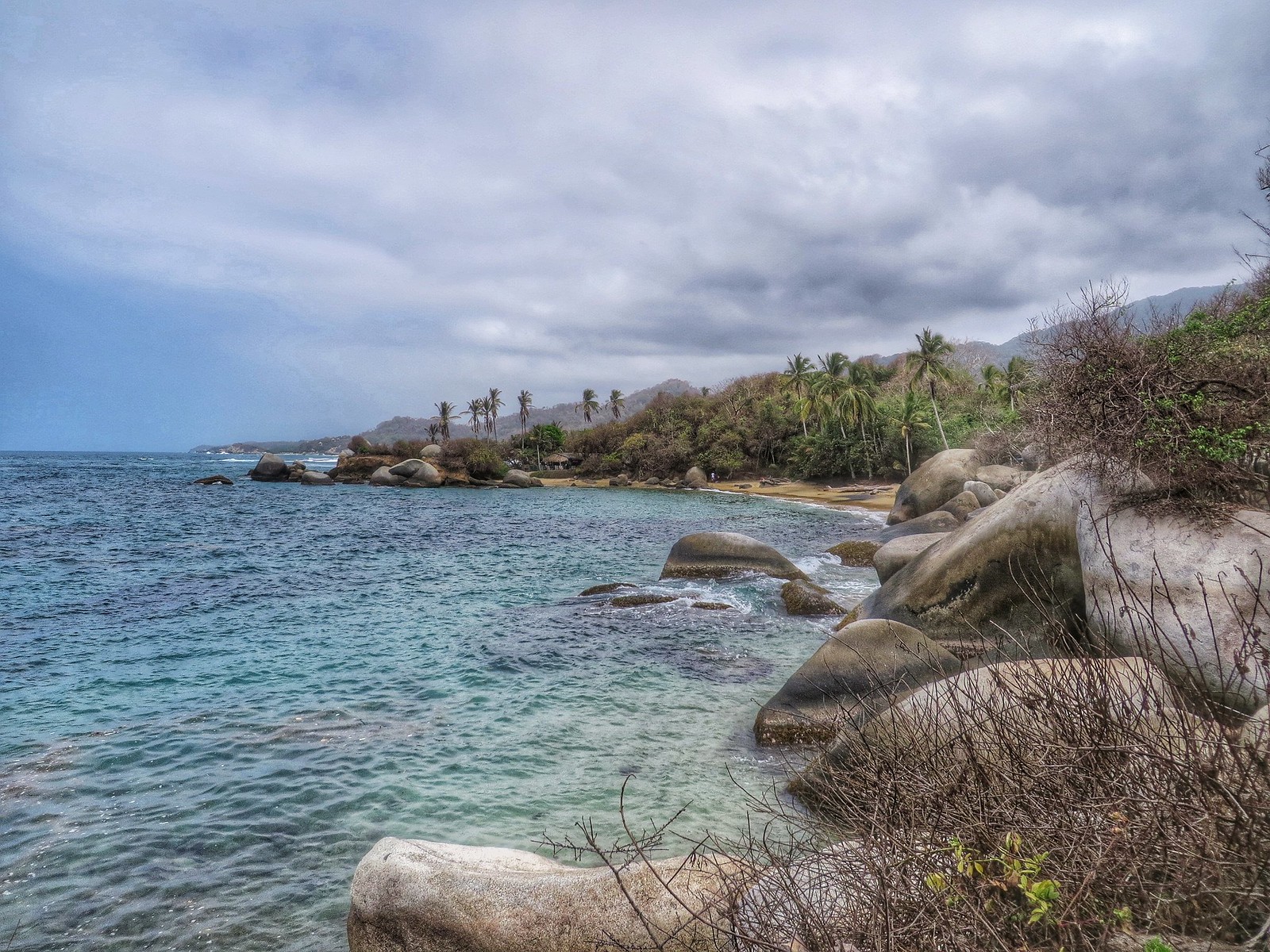

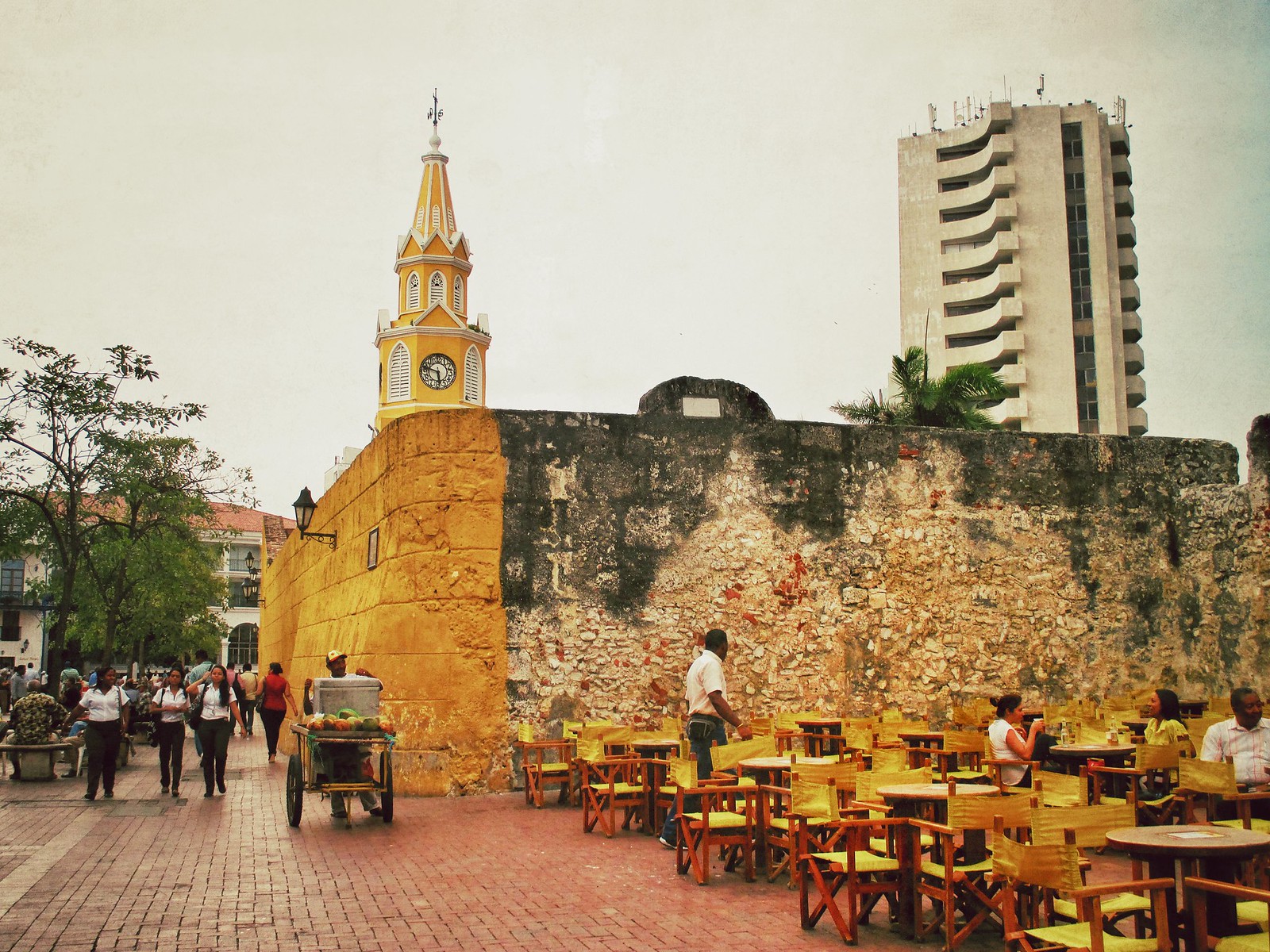
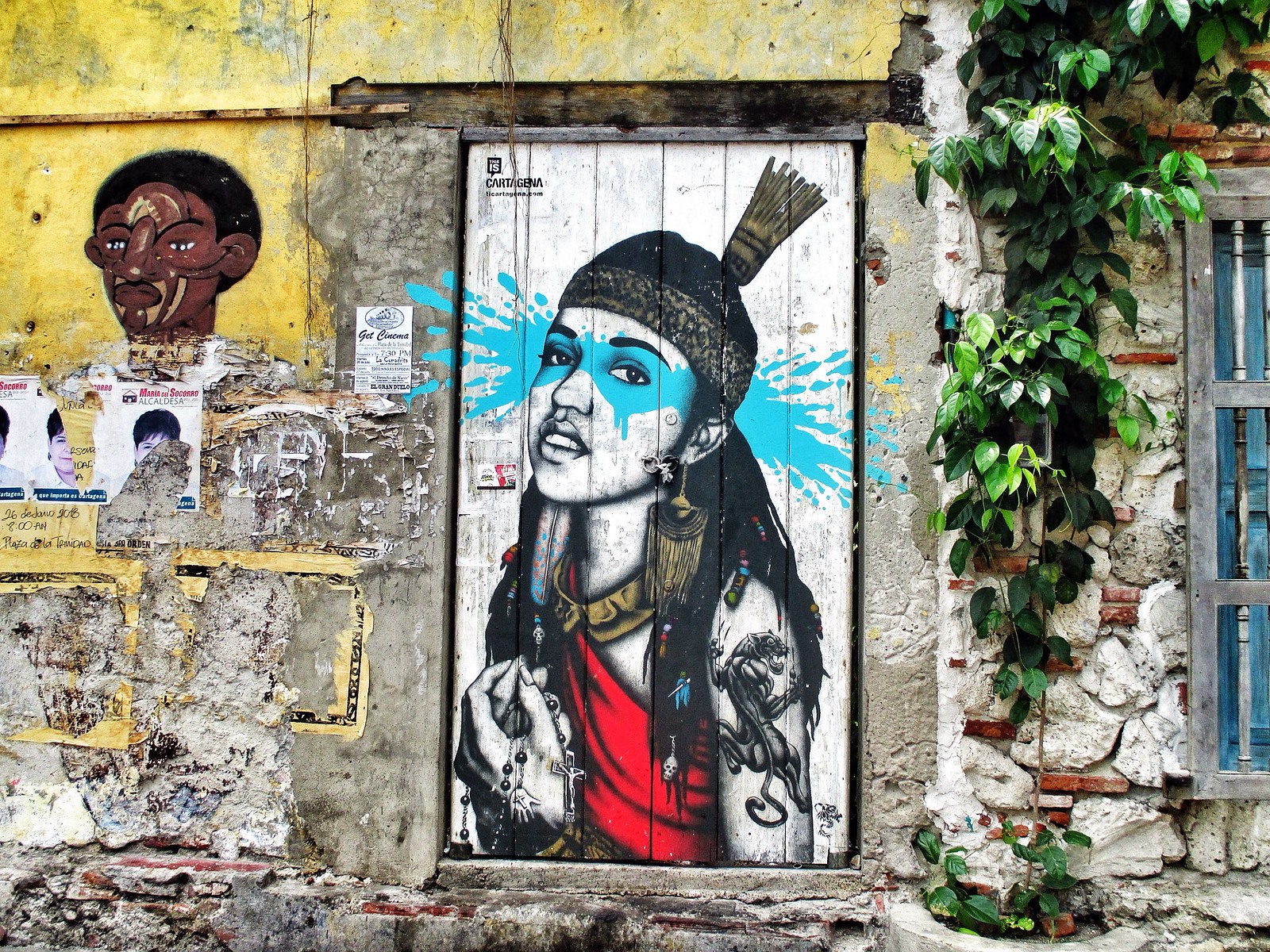
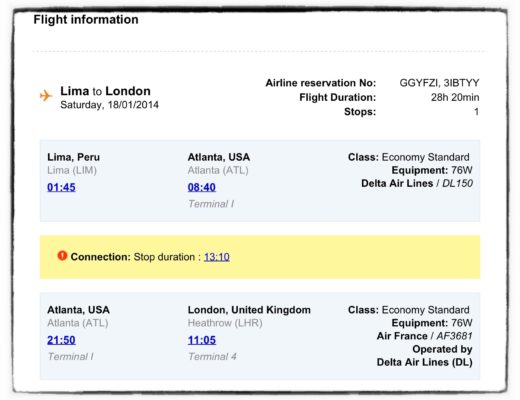
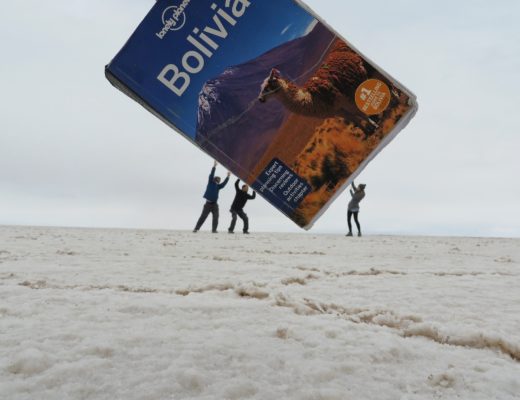

34 Comments
Clazz - An Orcadian Abroad
April 6, 2019 at 12:07 amWow, what an incredible post, Flora!! Colombia keeps climbing higher and higher up my list. Funnily enough, I just watched Dark Tourist tonight, and the first episode he covers the Pablo Escobar tourism. I quite like a bit of dark tourism but to me it just seems weird. It was pretty disturbing too, he did a tour with one of his main hit men who killed hundreds of people, like it was totally normal. Very fascinating, but not something I’d pay money to pursue or… encourage.
Flora
April 9, 2019 at 10:43 amThanks so much Clazz! The whole Escobar topic is such a complicated one… What frustrates me the most is that so many Colombians have begged for tourists not to visit these sites, because he’s directly responsible for murdering their loved ones and yet he maintains his reputation. And it earns money!
Dylan
April 6, 2019 at 12:15 amThree whole months in Colombia, that must have been amazing! I was there for one month a few years ago, and absolutely agreed with everything you said at the top of this post– what a beautiful, inviting, warm country. Going back has been in the back of my mind ever since I left, so you’ve given me plenty to add to my next itinerary 😉
Flora
April 9, 2019 at 10:51 amI’ve got to be honest – writing this has basically cemented my need to fly back to Colombia in the very near future! So glad you loved it there too, Dylan 🙂
Roz Irish Nomads
April 6, 2019 at 12:28 amWhat an incredible post. This is literally everything a backpacker needs to know before visiting Colombia! Loved reading your anecdotes through the tips!
Flora
April 9, 2019 at 10:52 amThanks Roz! I really hope the article will help other Colombia backpackers with planning their trips through one of my favourite countries!
Kay
April 6, 2019 at 1:04 amI would love to go just for the food!
Flora
April 9, 2019 at 10:43 amYou’d be making a good decision there, Kay!
April
April 6, 2019 at 1:52 amWhat an amazing post! Colombia has been inching up on my bucket list over the past year. I hear things are improving and it looks incredible! And i love how your photos highlight how colorful and vibrant the country is, too. Thank you for all the great tips and advice. I hope to get there soon!
Flora
April 9, 2019 at 10:53 amIt’s truly one of the most colourful countries I’ve ever visited 🙂 Hope you make it to Colombia soon, April – I’m certain you’ll love it there!
suedavies689
April 6, 2019 at 1:59 amLooks amazing. Love to see the street art in Bogota. And, interested to know how long you think you need for language school if you are a beginner.
Flora
April 9, 2019 at 10:56 amI spoke zero Spanish before I arrived in South America, so although I spent five months living in Ecuador before making it to Colombia I was mainly speaking a mess of Spanish I’d picked up from friends! I’d say it’s definitely worth committing to a minimum of two weeks of classes – definitely every day, and hopefully with a one-on-one component too. Once you’ve been practicing in a school environment for a bit, chatting in Spanish to taxi drivers and stallholders becomes more of a natural activity – and you can always do what I did, and have a few weeks of lessons then a few weeks travelling, then settling down for more lessons in another location (I ended up at two schools in Colombia, another in La Paz, Bolivia, and a fourth in Cusco, Peru!)
Katie Diederichs
April 6, 2019 at 2:32 amWhat an epic post! We love Colombia too — been there 3 times now, and already plotting to go back. There are many places in this article that we still haven’t been, so I’m pinning this for later!
Francesca
April 6, 2019 at 2:40 amI absolutely love Colombia! It’s so true that people think it is unsafe but I always felt safe when visiting. I highly recommend it to people.
Flora
April 9, 2019 at 10:57 amIt’s a positive thing for travellers that we don’t seem to face too much danger in Colombia! But sadly I still know there’s lots of violence in the rest of the country – and it’s worth reminding people that the civil unrest is far from over.
Teresa
April 6, 2019 at 7:07 amWow! Super comprehensive post on Colombia. I still to make it there but I’ll be sure to come back to your post when I come to plan your trip.
I love your take on Pablo Escobar tourism. It’s important to highlight that as travellers we need to think about the impact our choices have, even when doing certain tours may seem harmless.
Flora
April 9, 2019 at 10:58 amThanks so much Teresa! I hope you can make it to Colombia soon – it’s one of my favourite countries 🙂 Fantastic to hear you’ll be avoiding the Escobar tourism too. I know it’s everyone’s individual choice but it leaves a bitter taste in my mouth to think that people continue to profit off his violence and fear tactics.
GallopAroundTheGlobe (@KiaraGallop)
April 6, 2019 at 11:48 amWow, another incredible guide! And I’m impressed you can write about the places in such detail, considering it was a few years ago since your last visit. I think I’d struggle to do the same with Peru and Bolivia, where I spent six months back in 2014 (although reading this has inspired me to do so :))
Flora
April 9, 2019 at 11:12 amI took a lot of notes at the time but never wrote them up into guide format! I’m loving my new-found guide inspiration at the moment :p Glad it brought back some memories, Kiara!
Jyoti
April 6, 2019 at 3:05 pmThis is definitely the most authoritative and comprehensive article I’ve seen on Columbia. My husband is visiting there next week so I’ll share it with him.
Flora
April 9, 2019 at 11:14 amAhh fantastic Jyoti! I hope he finds the article useful – let me know if he has any suggestions for content I haven’t already covered here!
thelifeofasocialbutterfly1
April 6, 2019 at 3:10 pmThis is such an informative post for anyone looking to visit Columbia and another great read Flora. I love the mix of dishes to try and scams to be aware of to really assist travellers from all angles.
Flora
April 9, 2019 at 11:15 amThanks Jaz – glad you enjoyed reading!
Bartender Abroad
April 6, 2019 at 6:32 pmSuch a great guide!! It brings me back to my trip to Colombia + I too am very defensive of the country. I was there a month and never once felt unsafe.
Flora
April 9, 2019 at 11:13 amAww it’s lovely to hear you get defensive about Colombia too!
Sue
April 6, 2019 at 9:45 pmWow! What a huge & comprehensive guide! Thank you so much for sharing. Colombia sounds amazing & is quickly moving up my list of places I need to go. This guide is invaluable!
Flora
April 9, 2019 at 11:11 amThanks Sue! It’s an amazing country – I hope whenever you visit this article comes in handy 🙂
damecacao
April 8, 2019 at 4:29 amI literally just read this entire post. I’ve actually wanted to live in Colombia for the last several years, but haven’t even gotten the chance to visit, yet; I moved to South Korea three years ago. Sometimes I read posts about Colombia, where to go and what to do, just to remind me why I’m saving money, but this one just takes the cake. I don’t think I could possibly write a better love letter to Colombia, and I can’t wait to use this when I finally visit (hopefully next year). You took me around Cuba three years ago, as well, with me frantically screenshotting your posts before my hour of wifi was up, so thank you. Thank you for always taking us with you on these journeys, even when they’ve hard. We all appreciate you, Flora. <3
Flora
April 9, 2019 at 11:04 amMax, this might be one of the most lovely comments I’ve ever received!! Thank you so much – I honestly appreciate hearing this so, so much <3 The idea of you screenshotting all my Cuba articles is simply fantastic! I really hope you make it to Colombia next year. Let me know if you've got any more questions because it's one of my absolute favourite countries and I'm always happy to chat about it more 🙂
Andrew
October 27, 2019 at 3:36 amThanks for the very comprehensive article.
>There’s no train system in Colombia
There actually is a rail network in Colombia, but it is mostly used for cargo. The few passenger routes that exist are primarily for short tourists trips, such as the tren de la sábana which takes visitors from Bogotá to Zipaquirá. There was a train which travelled between Cali and several destinations in the 2000s (search on YouTube to see the videos), but the company stopped service after a few years. A couple of years ago the same company that runs the tourist train to Zipaquirá won the contract to run the tourist trains in Cali, but they have yet to renovate the train cars and get the trains running again.
lowestflightfare
November 16, 2021 at 10:15 amYou’ve played out an awesome work. I’ll unquestionably Digg it . It was most certainly instructive and the post is truly productive for me, keep up posting such posts.
Pati
May 20, 2022 at 1:08 pmI totally share your love for Colombia and I also extended my stay after couple of months and didn’t want to leave! This a great comprehensive post, thank you very much!
南アメリカをバックパッキングするための10の必須ヒント – 旅行のヒントとガイド
June 2, 2024 at 2:47 pm[…] タイロナ国立公園 […]
10 Tips Penting untuk Backpacking di Amerika Selatan – Tips Perjalanan
July 8, 2024 at 1:18 pm[…] Taman Nasional Tayrona […]